Welcome to the 33rd running of our Britain’s Best Driver’s Car contest, informally known around these parts as Handling Day – even though it’s actually three days on road and track and consists of a lot more than assessing vehicle dynamics. But what we’re always looking for is straightforward: the most fun-to-drive car launched this year.
Despite everything, 2021’s lineup looks extremely special. There’s always a moment, early in the days we give over to this contest, when we look at them all together and are struck by how competitive, or not, we know the competition will be. This year is a good one.
It has everything from modest but brilliant hatchbacks to the wildest supercars, a restomod, sports saloons and not one but two lightweight British sports cars – one, the Ariel Atom 4, invited back as defending champion. Then there’s the most powerful car yet to appear in this contest, a Ferrari with 1000 metric horsepower.
We’ll spend a day making a balanced judgement on the road: can these cars impress at sensible, sheep-untroubling speeds? And then we’ll head to Anglesey Circuit to explore their performance and limit handling properly. Following that we will have an argument, but knowing that, once the scores are in, we’ll have found Britain’s Best Driver’s Car for 2021.

The venue for Autocar’s Britain’s Best Driver’s Car 2021 was decided the moment the circuit manager at Anglesey said ‘yes’. Some things were easier to agree on than others in the track office and on the mountain roads of North Wales this year, but all four judges, and all gathered artistes and hangers-on, were of one mind in this respect: that there has never been a better place to conduct our annual comparison of the year’s greatest enthusiast cars than Anglesey Circuit and its nearby roads, and that rarely has there been a more varied and eclectic field of cars for comparing than we had this year.
The truth is, though, that even that happened almost by accident. The line-up for ‘BBDC21’ shifted and changed throughout the summer and was still developing – and causing yours truly to roll eyes and suck teeth – as late as two working days before the contest was due to start.
At first, the new Chevrolet Corvette C8 was in – and then it wasn’t (the car’s European press launch event in Frankfurt was only just finishing as we were setting up). The McLaren Artura was always going to make the starting grid. Until it didn’t (another poorly timed international press launch to blame). We had an outside chance, too, of a Maserati MC20 – and had it materialised, we might have had to rename the whole thing Britain’s Best Mid-Engined Masterpiece. But no.
In the end, nobody was more surprised than I was to see 10 of the year’s most significant sporting introductions, plus our reigning BBDC champion, all squeezed into the same Welsh car park, ready for the starting gun on that Monday morning. Our weather began warm and dry, and later on mixed in just enough dastardly drizzle to keep us honest over the Anglesey circuit’s kerbs. Our field of judges, cut down a little from its typical size, had plenty to do to get through all 11 contenders and to file their scores (as usual, out of a total 50 marks per car, half for driver appeal on the road and half for the track) on time. And, as one of them, I can tell you that it’s a dreamy, surreal mix of thrill-inspired reverie and sudden, frenzied, clock-watching haste that characterises the feel of BBDC each and every year. You’re delighted simply to be a part of it – right until somebody asks you to buy jalfrezi for 14…

Perhaps it was the fact we had such a mix of types of car this year – hot hatchbacks, lightweight sports cars, fast saloons, rear-drive coupés, trackday specials, old-soul supercars, newage supercars and more – that made so many of us wonder: ‘What if?’ We all know the rules here: we award credit purely for subjective driver appeal, and that credit isn’t balanced against value for money, daily usability, year-round UK-weather suitability or whether we’d be able to get a particular car on and off our driveway at home with ease. Even so, it’s an inevitable part of deciding how many marks to give a Hyundai i20 N, which has just taken to a mountain B-road like a greyhound to a gravel track, compared with a Ferrari SF90 Stradale, which streaks along the same road twice as rapidly just minutes later, except for the price of which you could buy the Hyundai 16 times over when it certainly doesn’t offer 16 times as much driver reward.
“If you asked me to pick the car in which I’d like to drive away and get the most joy out of over the full course of a year,” ventures a beard-scratching Matt Prior at one point, “it would be that i20 N. It’s great fun. You wouldn’t feel nervous or protective of it. You could just use it. That’s just so important.” And he’s right – not that he could give the little Hyundai, our reigning Best Affordable Driver’s Car of 2021, any extra credit for it.
The i20 N, small in its lane, locked onto its path and with a performance level that is deliciously well judged for winding out of third-gear corners, is a car that pleads to be wrung out. So you do, and it rewards just enough as it approaches its adhesive limits. This is a car with more grip, pace and purpose than you expect of a hot supermini, but not so much of anything that you can’t exploit and enjoy it all on the road.

The Hyundai is the kind of car you can’t help worrying about when it’s put up against six-figure exotics, but you really needn’t because it works so well – and it’s so easy to imagine yourself driving one on a daily basis. On the Anglesey circuit, it gripped and swivelled, dived and scrabbled its way into contention with a simplicity and directness that eluded many of its opponents.
You didn’t need to look far in that Welsh car park to find the Hyundai’s antithesis, either: it is wide, low, red and electrified – and alternately very noisy and very quiet. The Ferrari SF90 was eruditely described by Andrew Frankel as “like a vast thoroughbred stallion let loose in your sitting room”. One permanently excited by a cattle prod, dare I add?
Frankel didn’t pull any punches on the plug-in hybrid Italian. “It’s enormous,” he wrote. “Can’t deploy. These roads are just the wrong environment for it. It does everything pretty flawlessly, but who is it for? Half a million quid, unlimited production and no luggage space. Not once did I think I’d have had less fun in a standard 488 GTB.”
The SF90 certainly fills the winding lanes of Snowdonia more generously than anything else on test, and it troubled other judges due to its conspicuous lack of practicality. Moreover, and unlike the i20 N, it makes you feel utterly sociopathic for going near the bottom of the accelerator pedal’s travel. With its electrified powertrain set to Performance mode, it is an absurdly fast car, mostly as a result of being so responsive even to smaller throttle openings. James Disdale called the car’s hybrid powertrain “beautifully integrated”, though, and, to be fair, that’s exactly how it feels on the road: like one enormously potent and pin-sharp engine responding as one, luring and intoxicating its driver with an instant deployment of torque.
It handles with typical tautness and precision, and with trademark Ferrari fingertip agility, doing a first-class job of disguising much of its mass and cloaking most of the inherent complexity of its drive system – but not quite all of it.

Two flyweight track machines were in the mix this year and, both on the road and on the circuit, they took wildly different routes to capturing our attention.
The 440kg Caterham Seven 170R strips away the superfluous. It is the lightest, simplest and most delicate Seven you can currently buy. Rolling on 14in alloy wheels wearing 155/65 tyres and with only 84bhp to offer, it feels like something of a throwback. Disdale compared it to a “1950s single-seater”, while Prior imagined that driving it on track must be similar to “racing an old Austin Seven special”.
Both said judges loved the premium the Caterham places on conservation of momentum, though, and “the sheer compactness and efficiency of it”. On track, you have to be somewhat more committed to really have fun, and a little bit of slipperiness under the contact patches actually helps. Frankel learned to be “ridiculously over-ambitious with corner entry, chucking the car in at a speed that you know it can’t sustain, so the back breaks loose. Because the car carries so little momentum, it starts shedding speed all by itself while you ride it out on opposite lock, hooting with laughter. So you have to drive it like an idiot – which is fine by me.”
You can drive the Ariel Atom 4 like an idiot, too, and some of us even felt obliged to. Our defending BBDC double champion has had an optional power output hike since we last drove it, and it came to Anglesey with 350bhp and 350lb ft at its, and our, disposal. In a car weighing less than 600kg, that is an ample sufficiency, to say the least. Plenty of testers only dared to wind the car’s little blue boost control all the way to ‘3’ on the track, but plenty also found that the Ariel’s brilliantly expressive and yet stable chassis can sustain even that much grunt without putting your heart in your mouth.
It’s a car that makes big physical demands of you, the Atom, but nothing is more rewarding, nor as exhausting, when you’ve tailored the car’s set-up just as you like it and you’re getting every magnificent shred of balance, grip, pace and handling adjustability out of it. The Atom’s steering is fast-paced and heavy with feedback, the kind that could give a seasoned bike racer arm pump after a couple of fast track sessions. And then, on the road, on the Safari settings of Ariel’s optional Öhlins suspension, the car feels so completely different, albeit in a supremely fluent and voluble way, and yet no less wonderful.

Three four-door performance saloons were involved this year, with more than £100,000 between their price tags: the Peugeot 508 PSE, the BMW M3 Competition and the Alfa Romeo Giulia GTAm.
The plug-in hybrid Peugeot was welcomed. Frankel recorded how good it was “to see Peugeot trying to occupy the centre ground for enthusiasts who need a family daily driver”. The 508’s dynamic showing met with qualified praise only, though. Credit was given for its handling, which had signs of balance and interactivity, and which, as one tester recorded, “was clearly trying to do the right things, although it’s governed by electronics which can’t be disabled and which you can actually feel thinking”. Another (well, me) came away frustrated that the car’s powertrain should have so much torque and response but not be more directly controllable or involving, and with no proper manual gearbox mode.
The Peugeot’s driving experience was clearly not a natural, conventionally engaging one – an accusation that couldn’t be levelled at the Alfa, whose litheness, springy energy and natural verve struck everyone who drove it. The Giulia’s steering is gossamer-light in its gentler driving modes, gathering a little more weight in Race mode but always remaining so direct, finely precise and free-flowing in your hands. It feels at odds with the DTM-car looks, and some judges liked it more than others. But everyone appreciated the way the GTAm zipped and bounded along those roads, and then let loose such big-hitting potency from its ​​turbocharged V6 on track that it seemed amazing that the brakes (which are absurdly powerful), suspension springs and Cup tyres could contain it all. What a superbly spirited thing.

One thing the Alfa didn’t do on track was endure: its clutch-based rear differential is quick to overheat, making drift angles, which are initially easy to maintain, too soon become untidy, allowing corner-exit traction to literally go up in smoke.
The BMW M3 Competition, on the other hand, has less delicacy, tactility and vivacious character than its Italian opponent, but it counters with longer-lasting track composure and precision. As Disdale put it, you could drive the German “as neatly as a short back and sides” if you wanted, “until the temptation to indulge the car’s inner hooligan becomes too much”.
Thus, our four-door contingent was the current super-saloon niche in microcosm: an interesting mixture of the analogue and old-school, the expressive and wonderfully unhinged, and the modern, digital and reined-in. And, as luck would have it, there were even more analogue, expressive treats to be had elsewhere. Anglesey’s corners, straights and nearby valleys howled to the tune of epic, idiosyncratic combustive drama for three days this year, courtesy of the Porsche 911 GT3, Aston Martin Vantage F1 Edition and Lamborghini Huracán STO.
![]()
Mostly thanks to the Lamborghini, actually. What a majestic noise it makes. You wouldn’t want it next door at 6am, but from a range of about a quarter of a mile, warbling that unmistakable V10 two-part harmony up to the far side of 8000rpm, it sounds indecently good; on track, it shouts down just about everything else combined. How it passes industry noise homologation rules is a total mystery.
The Porsche, Aston Martin and Lamborghini all weighed in with world-class grip levels that ran into brilliant, benign handling balance and supreme adjustability on track, even though all three carried their engines in different places, and encouraged fascinatingly different driving styles. To be able to write that of the Huracán says a lot about the incredible dynamic transformation this supercar has been through since first appearing in 2014. In the Vantage’s case, we all suspected that a great driver’s car was waiting to be unearthed by Gaydon’s recent special-edition chassis makeover, although it’s nonetheless delightful to find that it can now better manage its mass, handle more consistently and come off a slide so perfectly.
Neither the Lambo nor the Aston, however, could quite combine any-angle drift cornering at one moment with such eye-popping high-speed grip and razor keenness the next, and such flawlessly faithful steering precision and feel, as the 911 GT3 can manage. Disdale called it “flipping sublime; a car you’d just keep lapping until the fuel ran out”. Prior actually did keep lapping it until the fuel ran out, later calling it “joyful, delicate and lovely” (once he could finally be prised out of it).

It will come as a surprise to absolutely no one, then, let alone regular readers of Best Driver’s Car features over the years, that the 911 GT3 is a car you’ll be reading about later today, when Frankel takes up the story to focus on those favoured few voted into our order’s top three.
You’ll have to wait for him to tell you what the others are, but before that a moment on the one car you’ve yet to read anything about: the David Brown Automotive Mini Remastered Oselli Edition. We’ve never had a restomod in BBDC before, and so first a nod of appreciation to this car’s creators for having the confidence to put it up for inclusion in the first place. None of those who drove it will forget doing so, albeit for different reasons.
The Mini’s made-over, twin-carb 1450cc A-series engine sounds fabulous whenever and wherever it is working, with induction hammer and four-cylinder combustion blare in equally superb proportions. It is characterful and involving to a fault, lumpy idle, pudding-stirrer shifter and all. But its handling fell some way short of being representative of the very best original Minis, being so sensitive to bump and camber on the road as to often leave its driver on a different side of the carriageway to the one originally intended, and being notably prone to rollrelated oversteer – but more so when going left than right.

Disdale recorded that he “wanted to love this Mini”, but there was clearly something not quite right with the set-up. “It felt borderline dangerous on the road,” he continued, “where the tail would swing alarmingly through lefthanders on turn-in yet was more stable on right-hand turns, when the quirk was a sort of power-on oversteer on the exit”. There was more love for the Mini’s handling and impish charm on track, but not enough to keep it from finishing a distant last when the scores were counted. At the sharp end, meanwhile, there was a whole lot more power, grip and downforce, not to mention high-voltage current.
Tester's notes

Lamborghini Huracan STO: “As outrageously usable on a circuit as it is outrageously unusable on the road. Steers too lightly and a bit digitally for me, but there’s a lovely handling balance in there somewhere. Makes an epic noise, too. I’d prefer it if the wheel was actually round, but I’m sure it’s bloody great deep down. I like it a lot, and it’s my favourite Lambo for a long, long time. Not sure why it needs to be so intimidating to look at, though; you look like a bit of an idiot in it on the road, and sound like one too.” Matt Prior

Aston Martin Vantage F1 Edition: “Those ‘it’s the car it should have been from the start’ clichés are hard to avoid. The power is nice, but it’s the poise and precision from the structural and suspension changes you notice. You can commit to a road in a way that wasn’t possible before, and on track it gets better the harder you drive. The e-diff works well, so minimal understeer on the way in, superb traction from the apex, and as much fun as you want on the exit. The best Aston I’ve driven in years.” Andrew Frankel

Hyundai i20 N: “Just what you want it to be on track: predictable, safe, indulgent, fun. A Fiesta ST might be more entertaining still, mind you, and I don’t like the way it holds onto revs, but I expect the i20 N might be quicker over a lap because it’s neater and needs less management. On the road, the safe middle ground is its domain, entertaining just enough without inviting anything risky. Appreciate its ability to thread down a narrow road, and the fact you can use so much of its performance relative to almost everything else.” Andrew Frankel

Peugeot 508 PSE: “Would be unfair to say it was out of its depth here, but it highlighted the fact that this is a quick and satisfying executive express rather than an out-and-out driver’s car. It’s fast with electric and ICE motors working together, while the chassis has that fluid feel that French cars used to do so well: like you’re floating just above the surface but always keyed into it. Felt better on track than expected. Steering is quick and accurate with some nice heft, while the rear motor helps neutralise understeer and fire you out of the corner. Won’t be remembered as a BBDC great, but was a welcome reminder that Peugeot still knows a thing or two about chassis tuning.” James Disdale

BMW M3 Competition: “I’ve been a bit ‘whelmed’ by the M3 so far: I’ve quite liked it and quietly mooched around with it, but that’s been it. Now, though, on a proper track: bam. What a thing. It has a round steering wheel and not quite as much torque as the Aston but once it’s sliding, it slides perhaps like nothing else here. What a bloody blinding piece of kit. Love it to bits on a circuit. Mega. What a pleasant surprise.” Matt Prior

Caterham Seven 170R: “Still not sure about the motor. I like the torque and the chirruping and sighing of its turbo (sounds like a Jimmy McRaespec Group A Sierra Cosworth circa 1987), but it lacks the instant and proportional response you expect from a Caterham, and the gearing is just plain weird. That aside, it’s bloody brilliant. Just enough performance to feel quick on the road, while the skinny tyres allow you to exploit the Seven’s natural handling elan at any speed. It’s even better on track: not fast, but the chassis is so good you don’t care. You simply throw it into a corner and sort it out. I’ve never driven a 1950s single-seater, but I imagine it feels a bit like this.” James Disdale

Alfa Romeo Giulia GTAm: “Soft suspension and quick steering shouldn’t go together this well, but the Alfa gives fantastic feel and control, and it is so satisfying squeezing every last ounce from it. I just wish they’d equipped the rear e-diff with better cooling, and I’m sure the judges feel the same way; the M3 goes for lap after lap and retains the locking functionality at the back axle, but the Alfa’s easily overheats.” Richard Lane

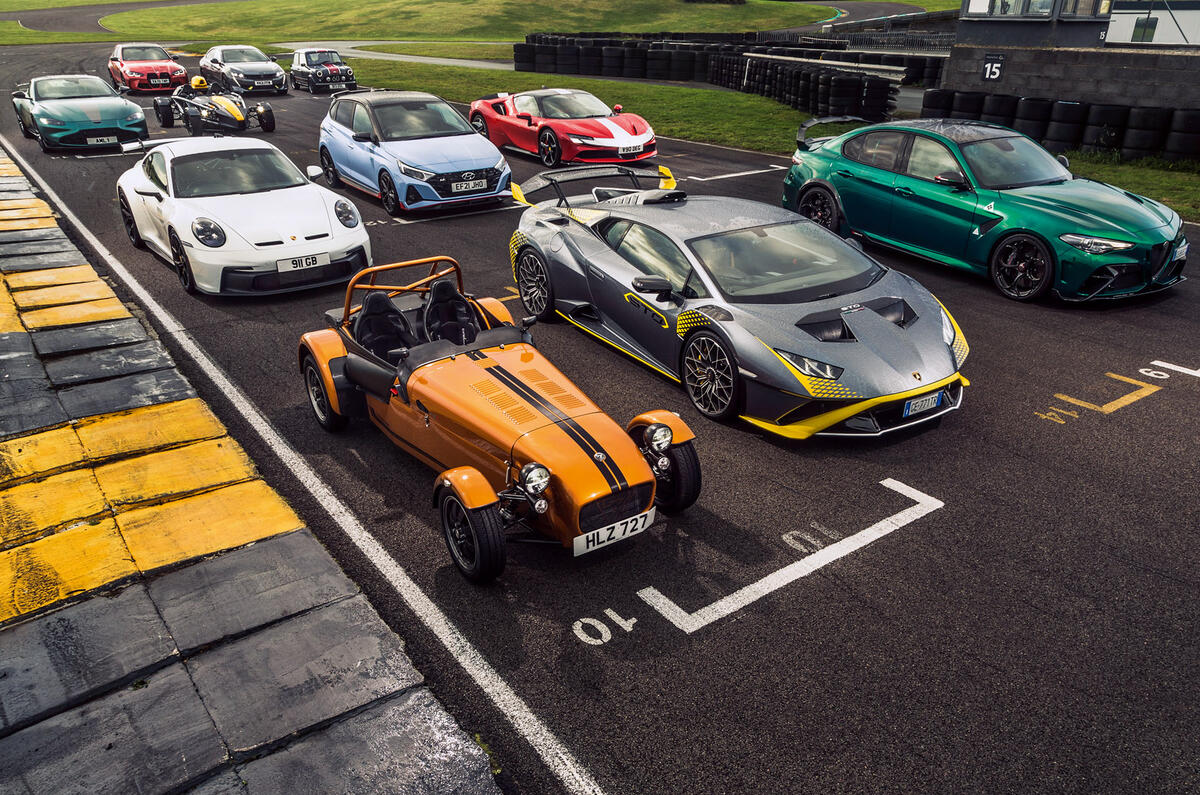
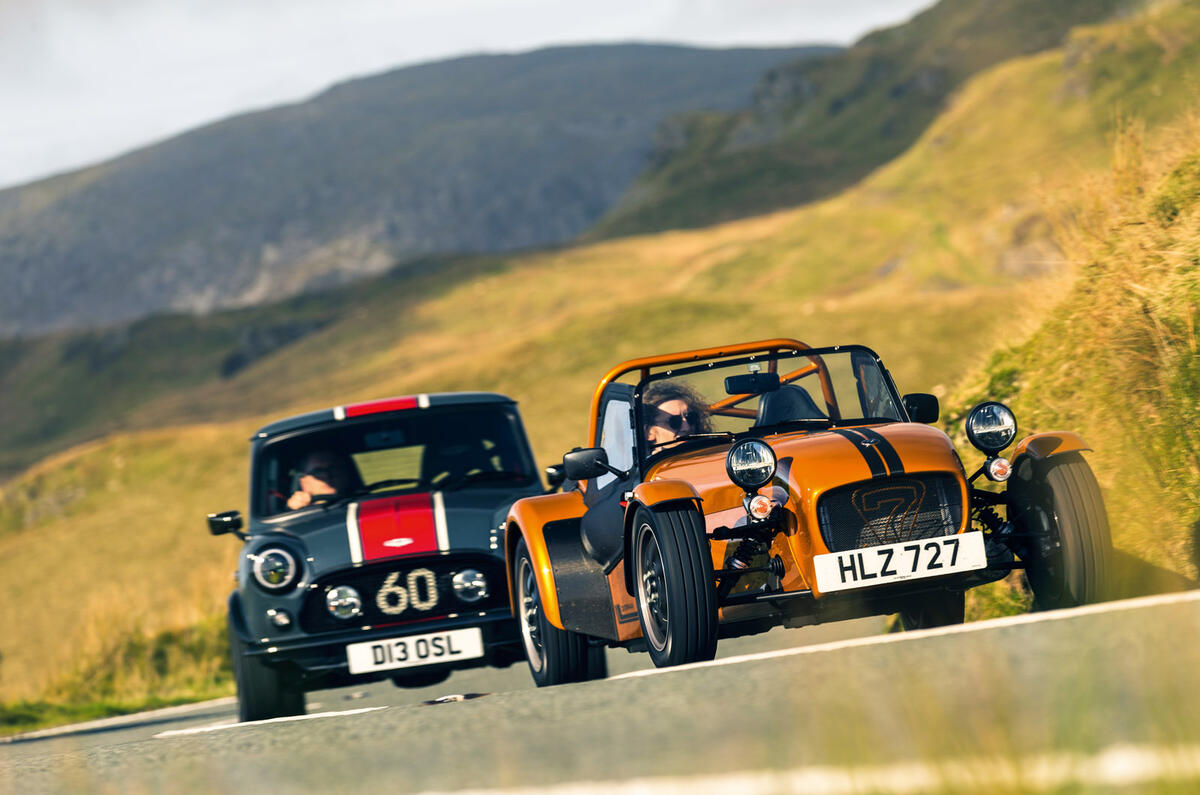
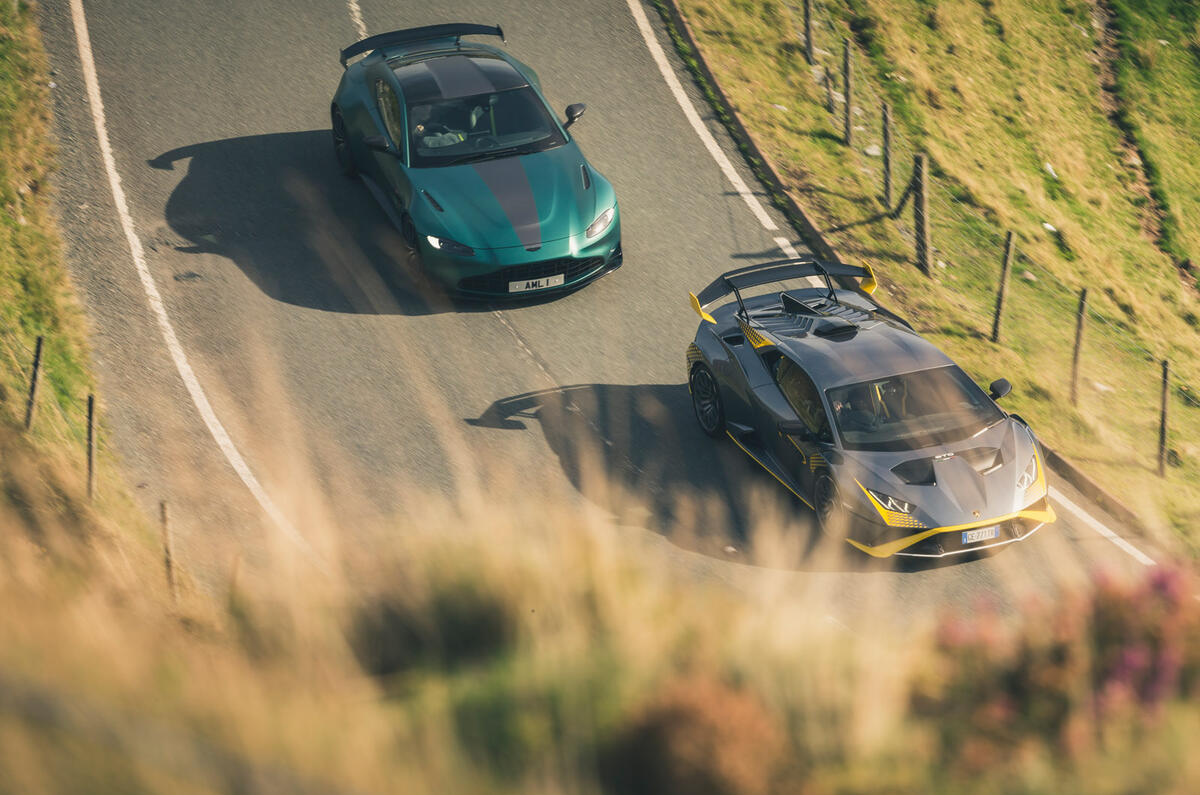
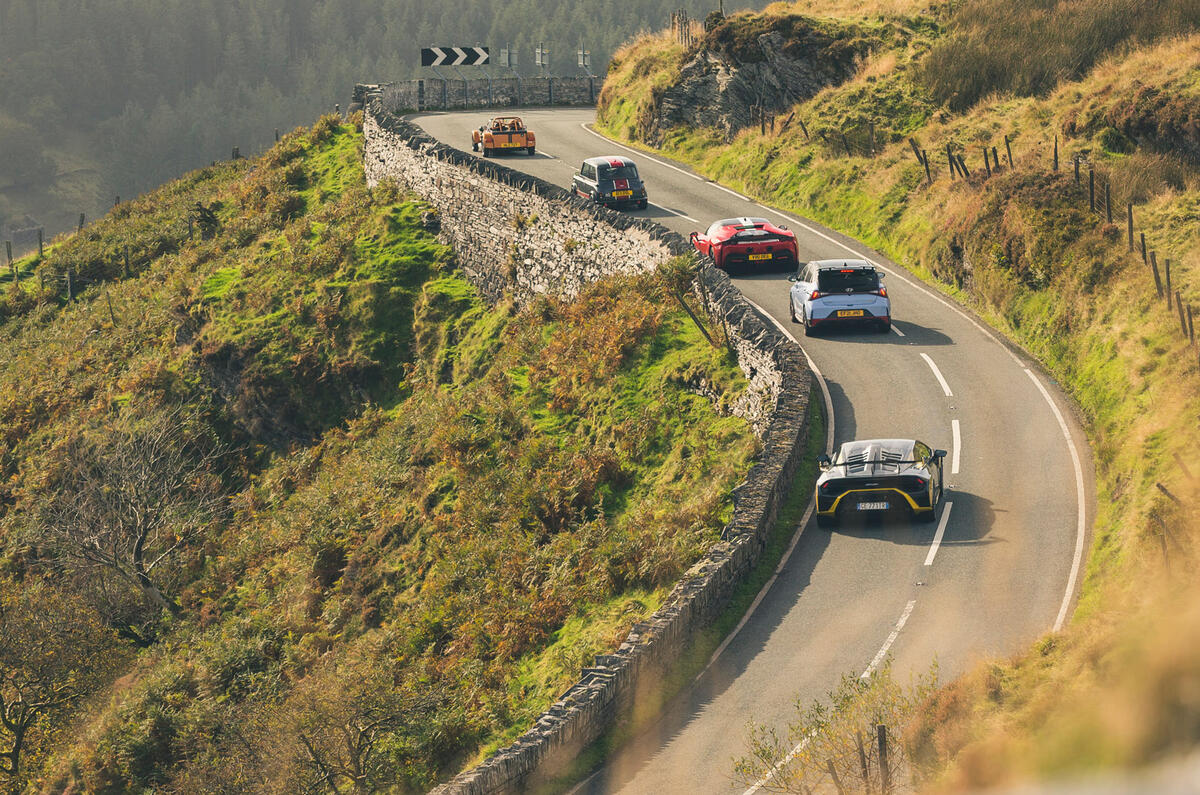
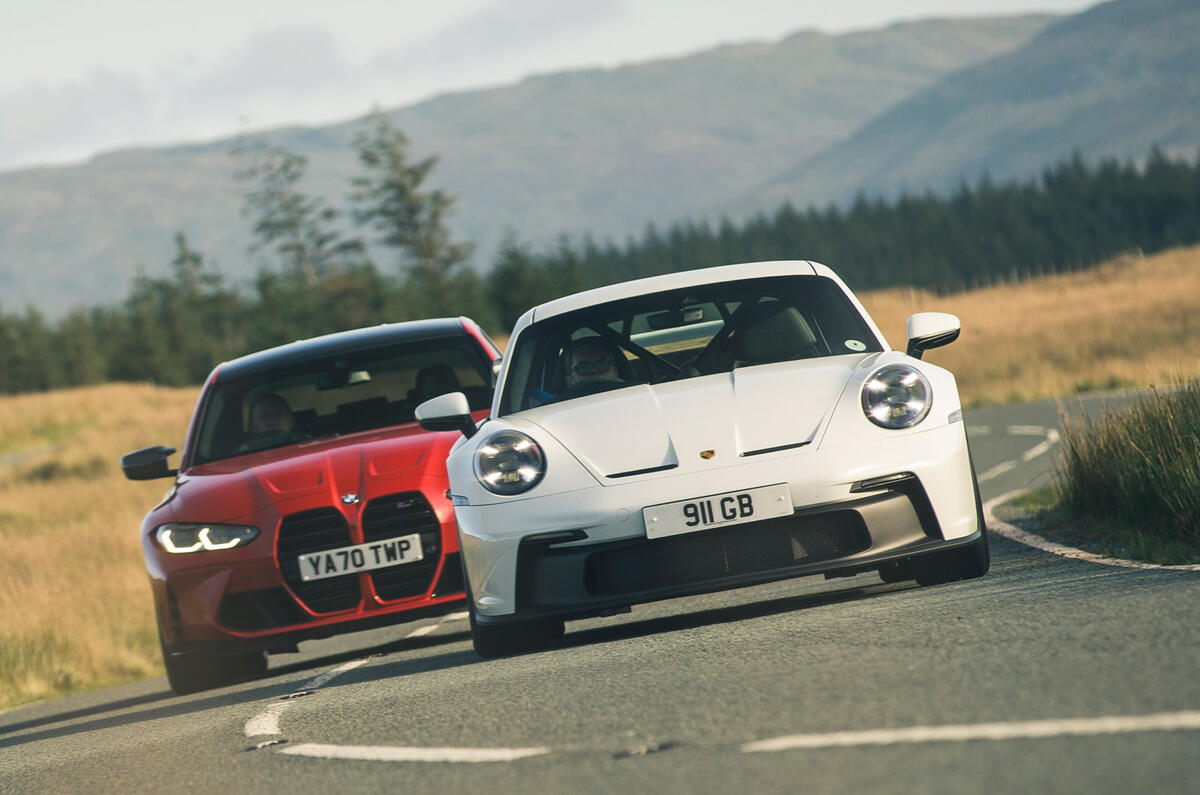
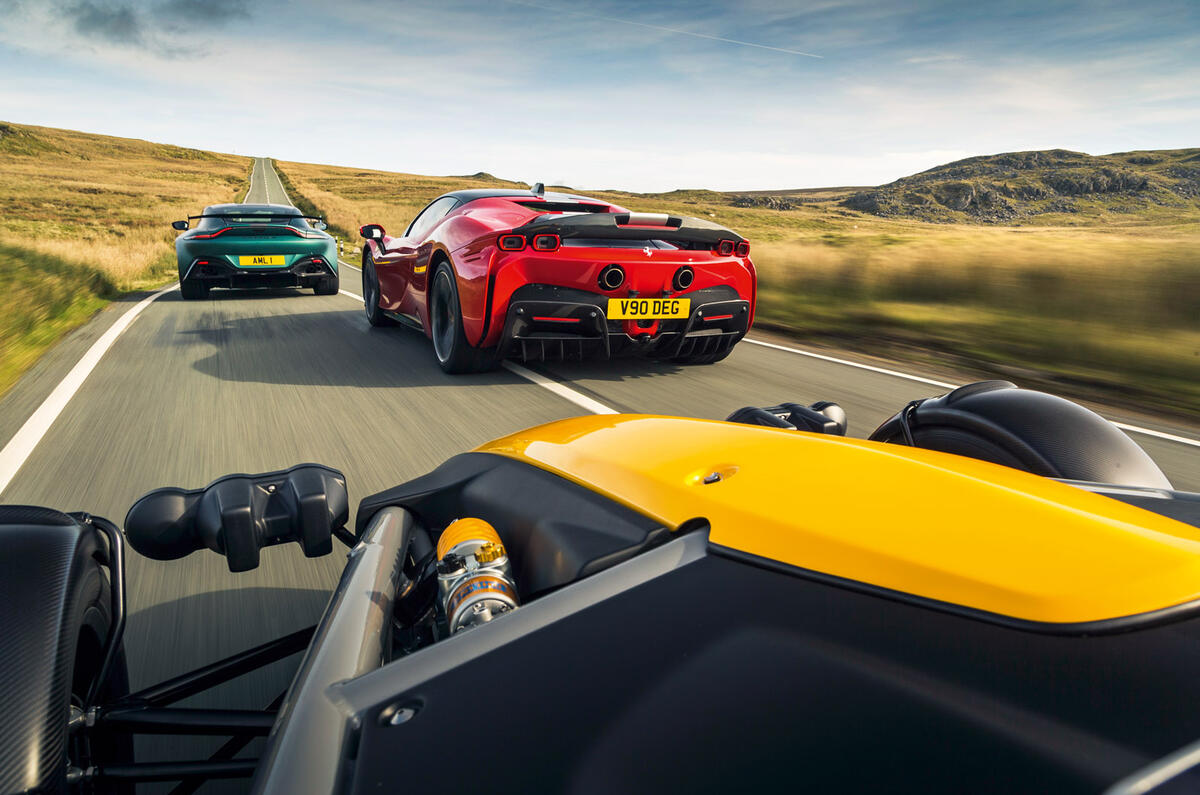
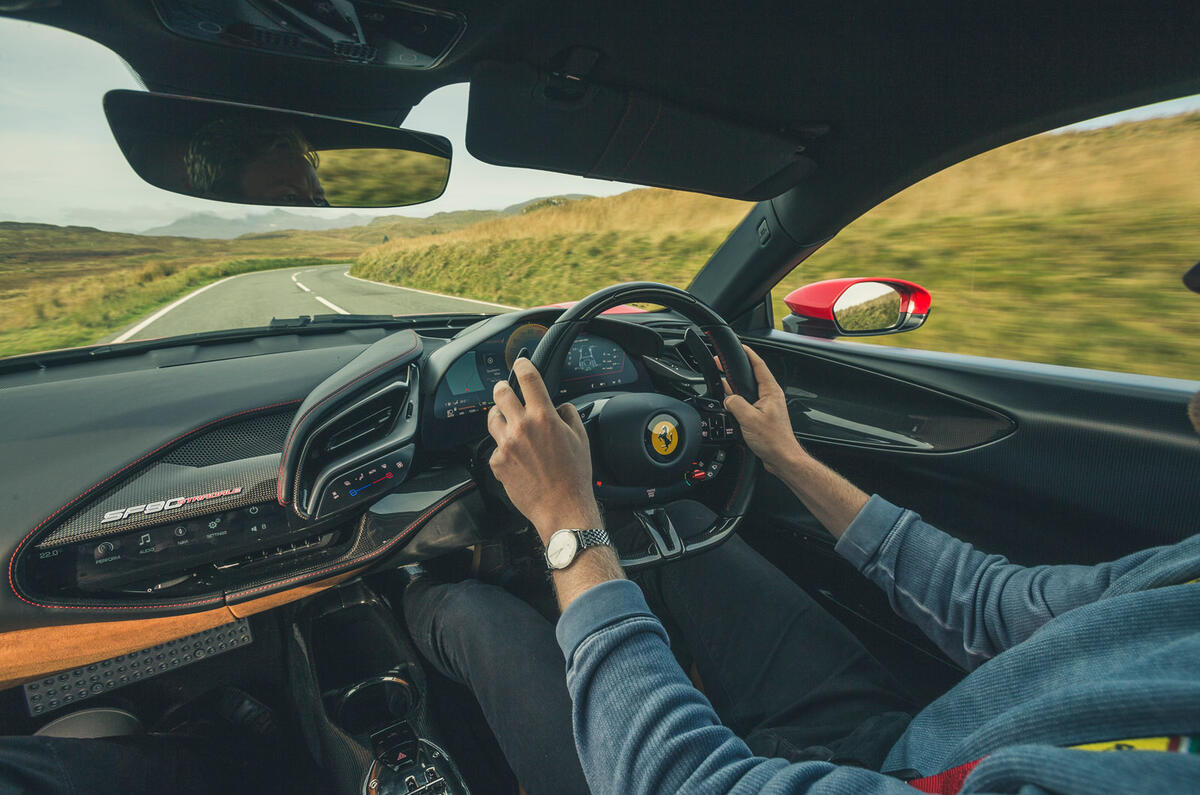
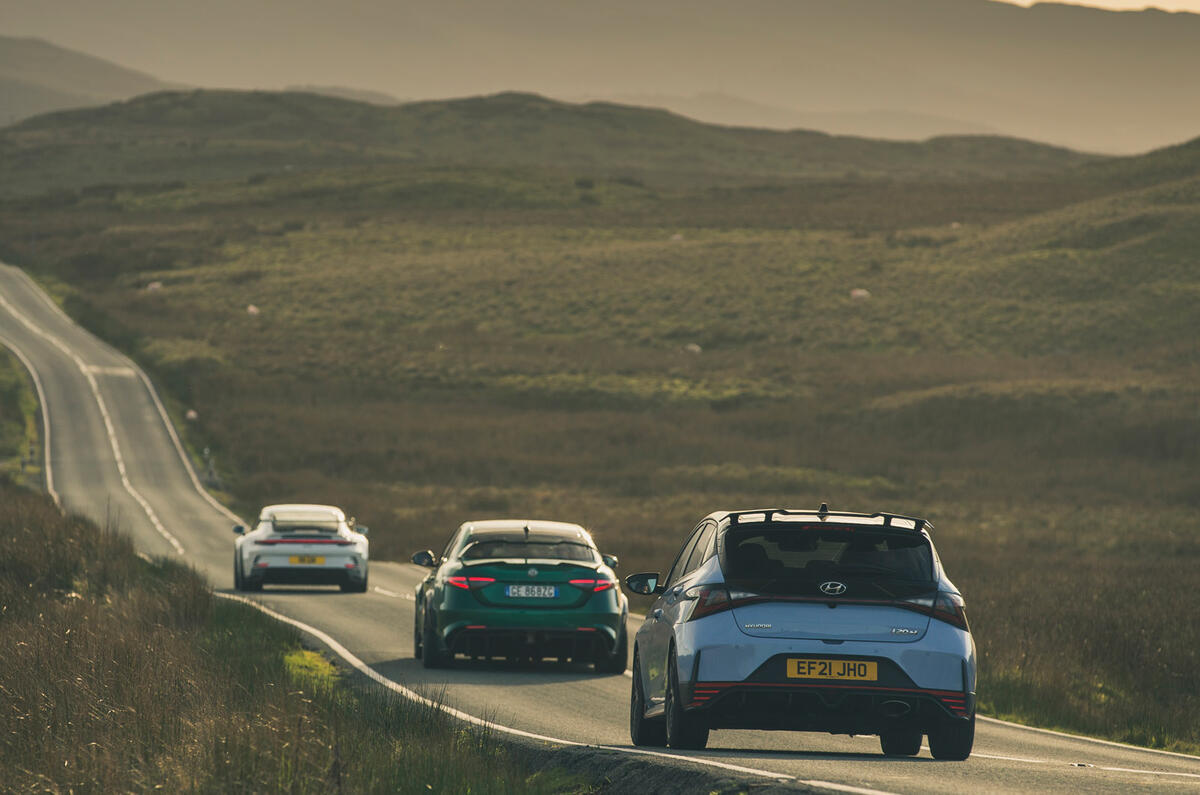
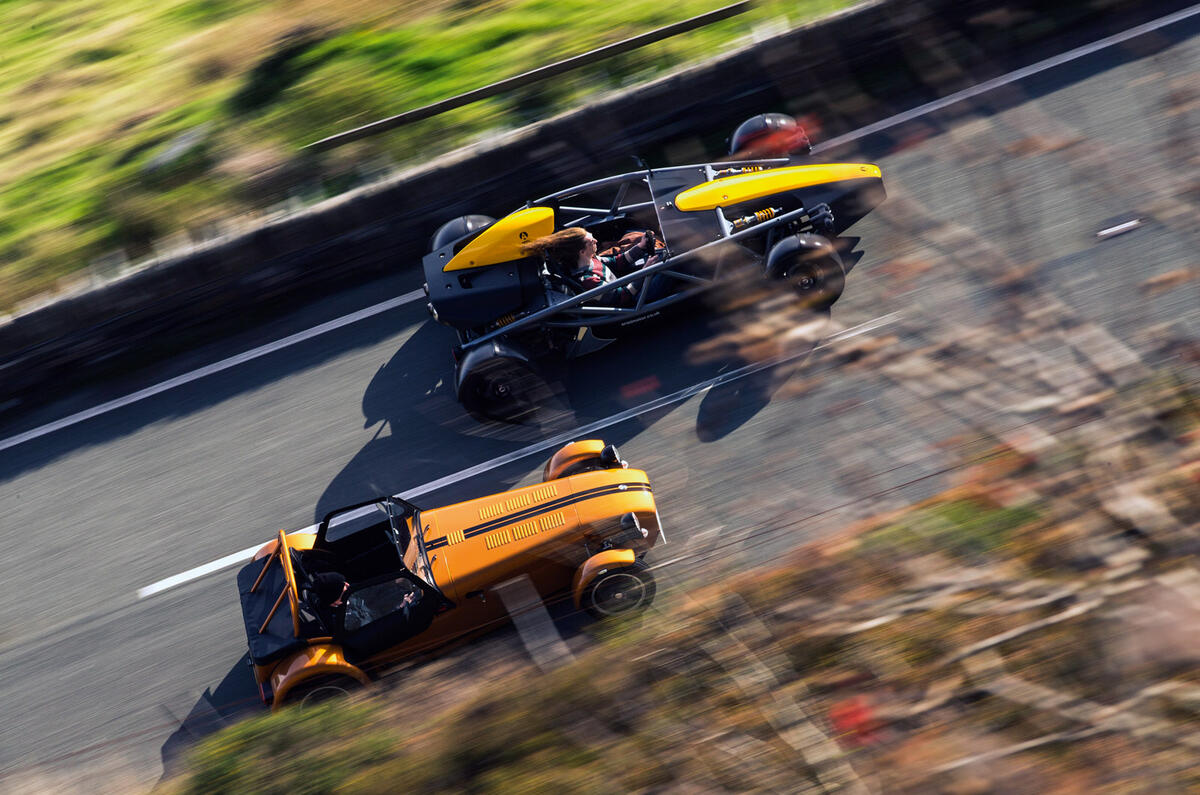
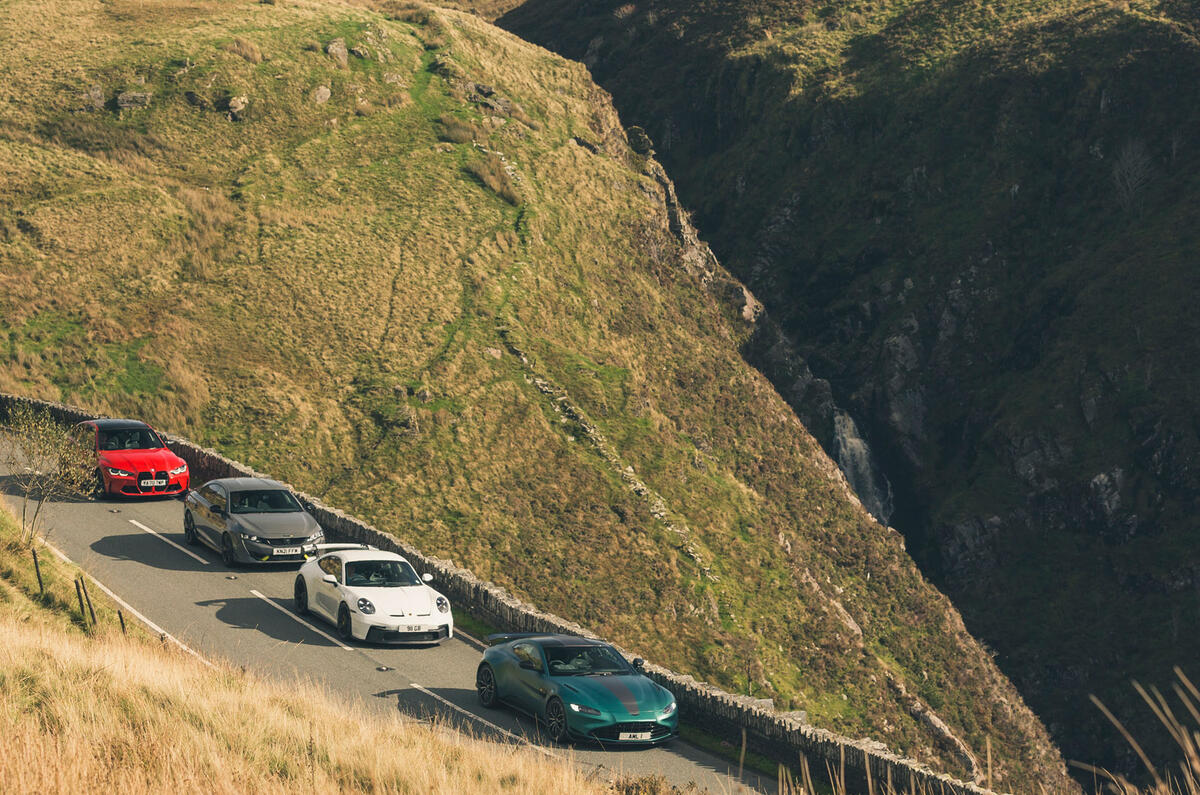
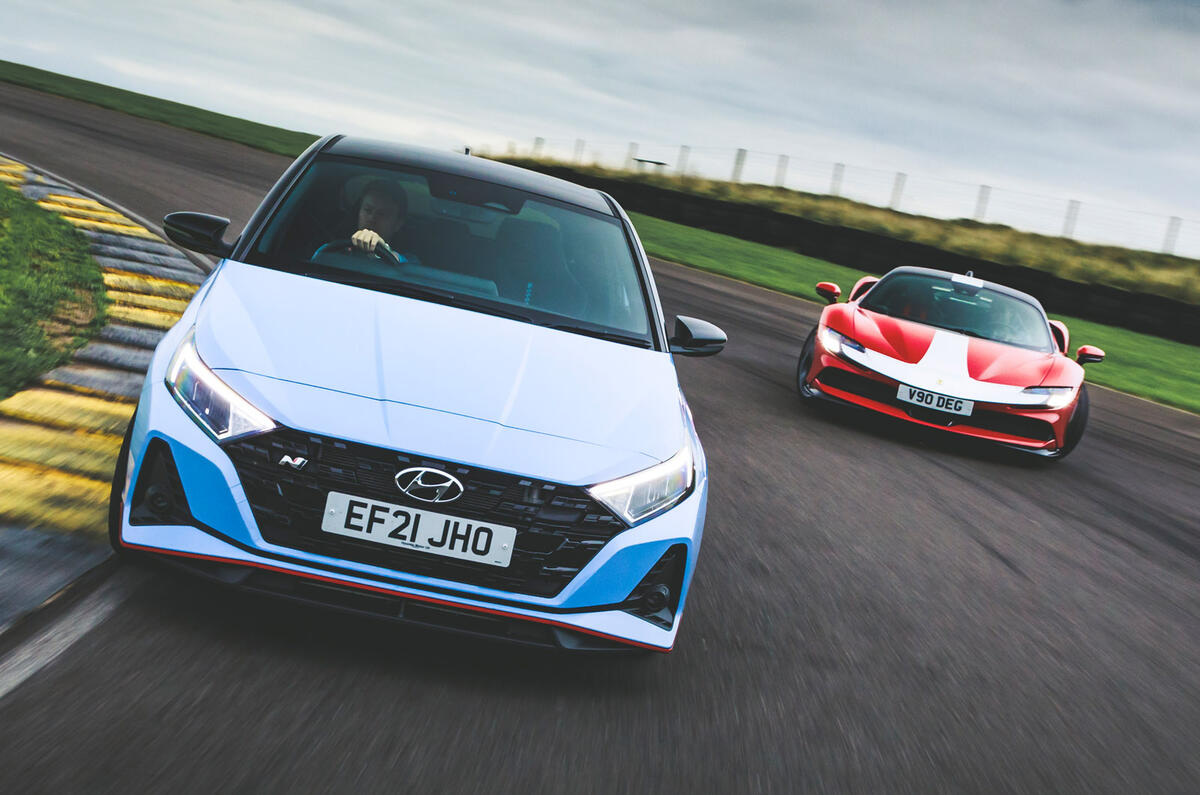
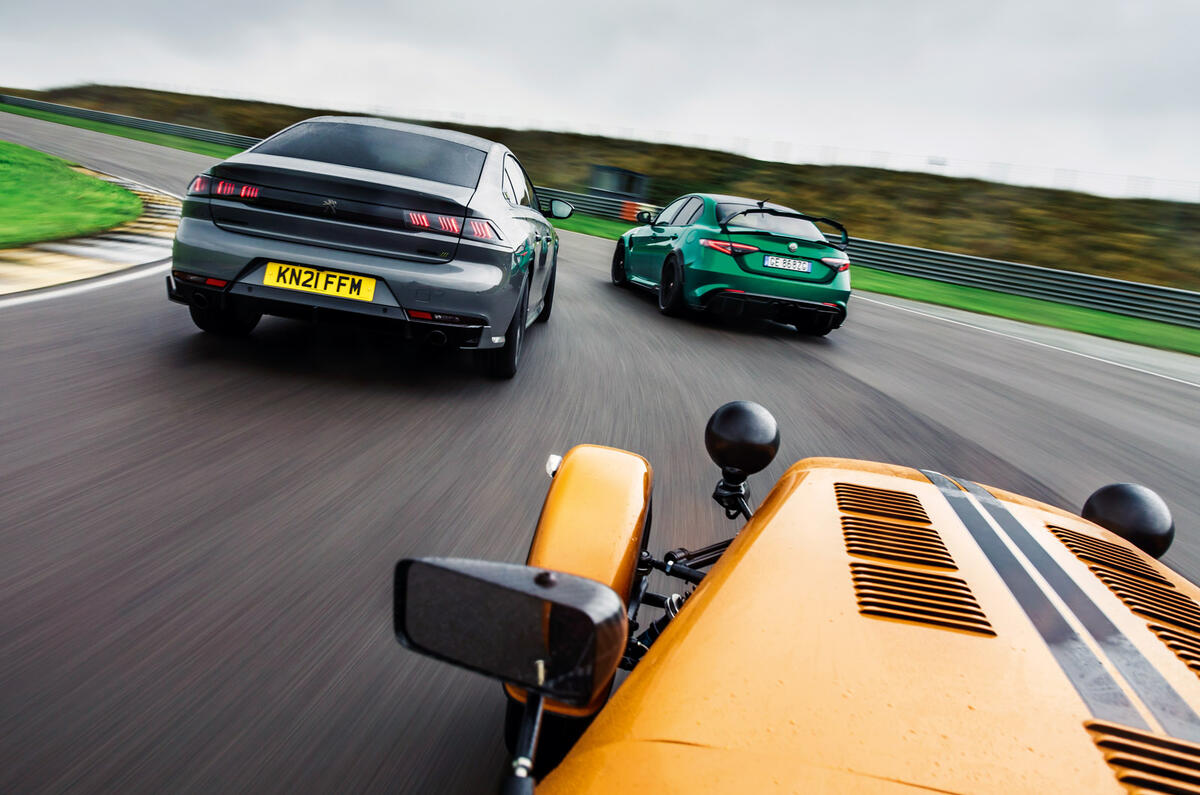
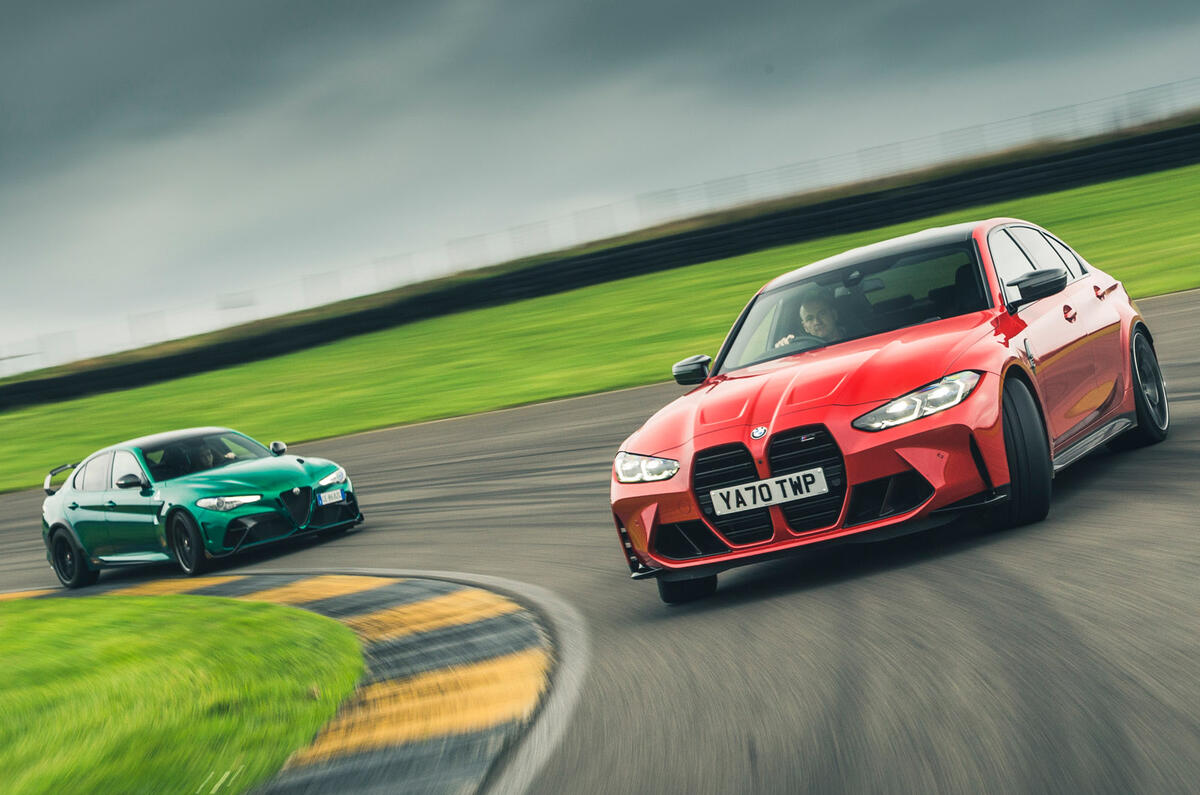
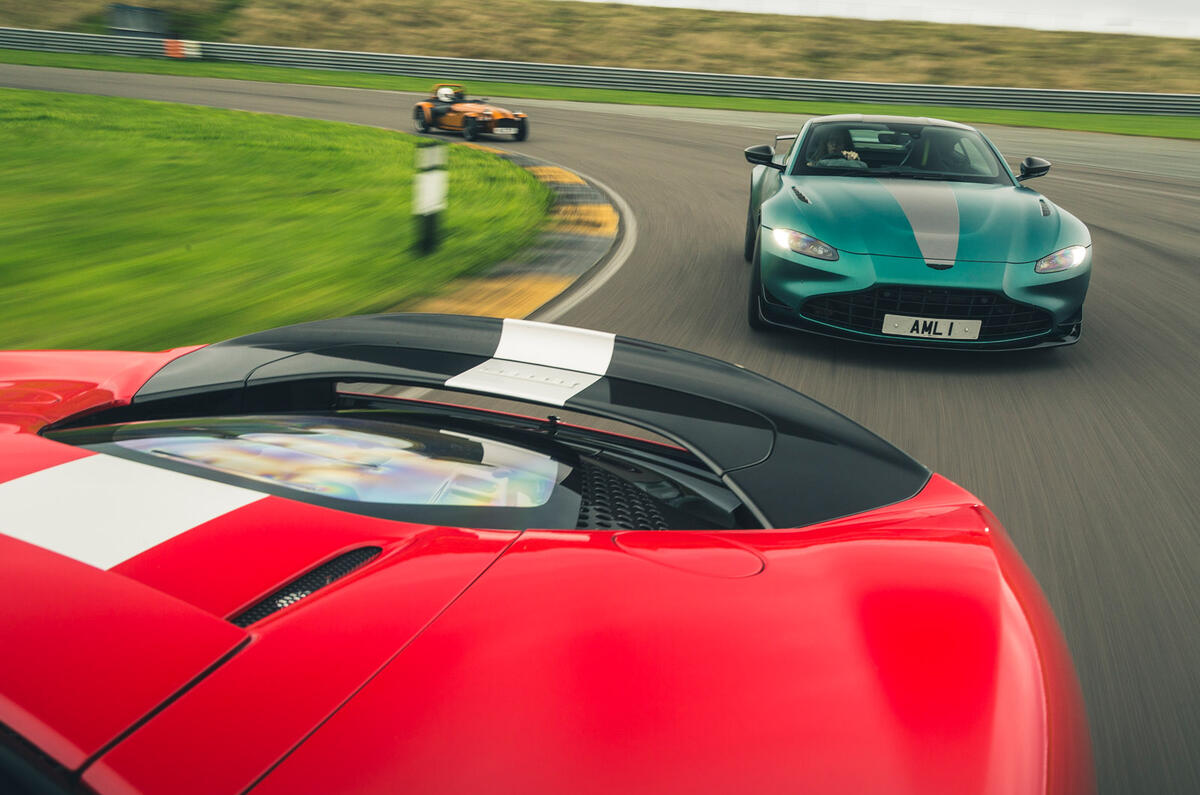
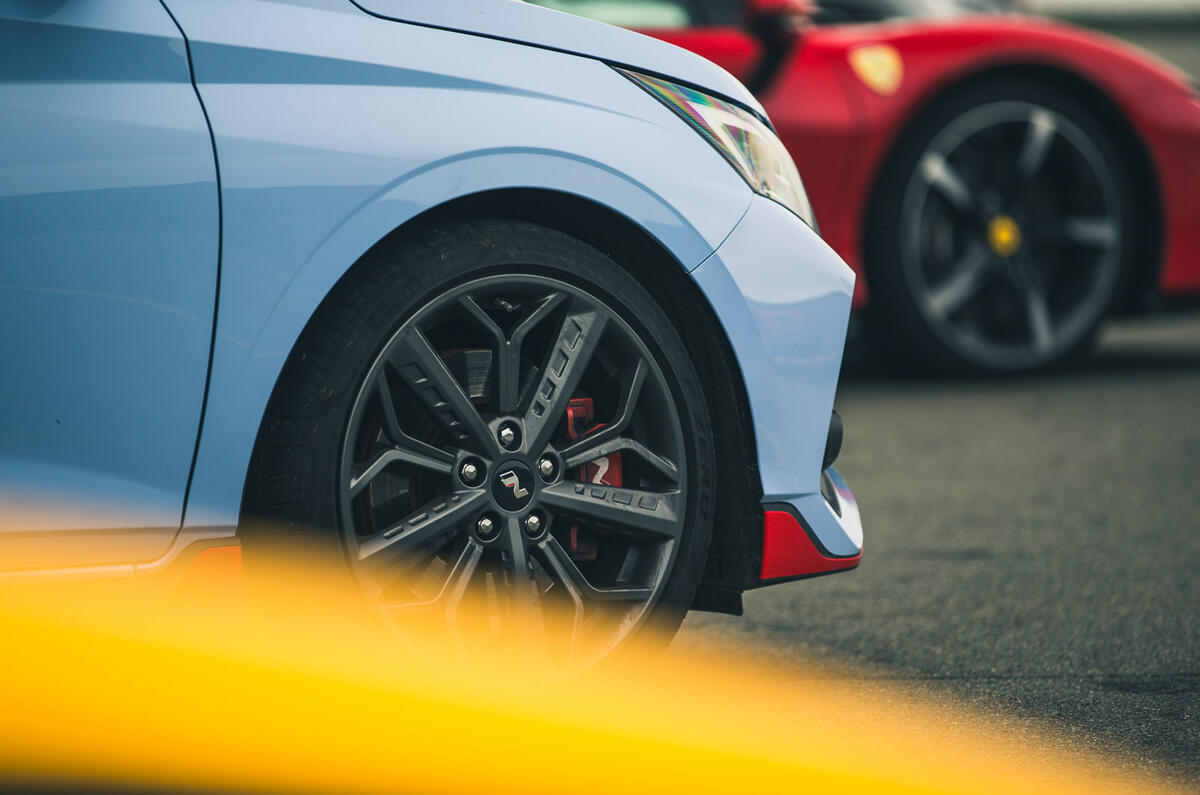
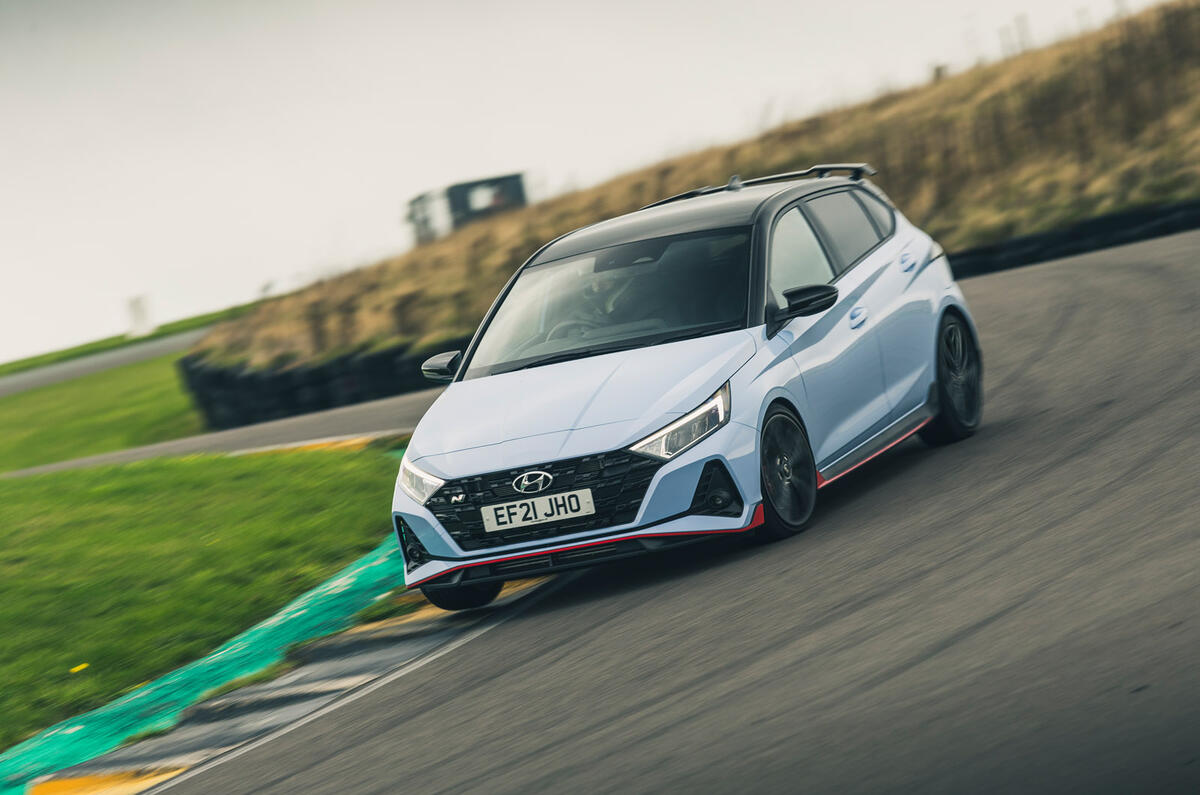
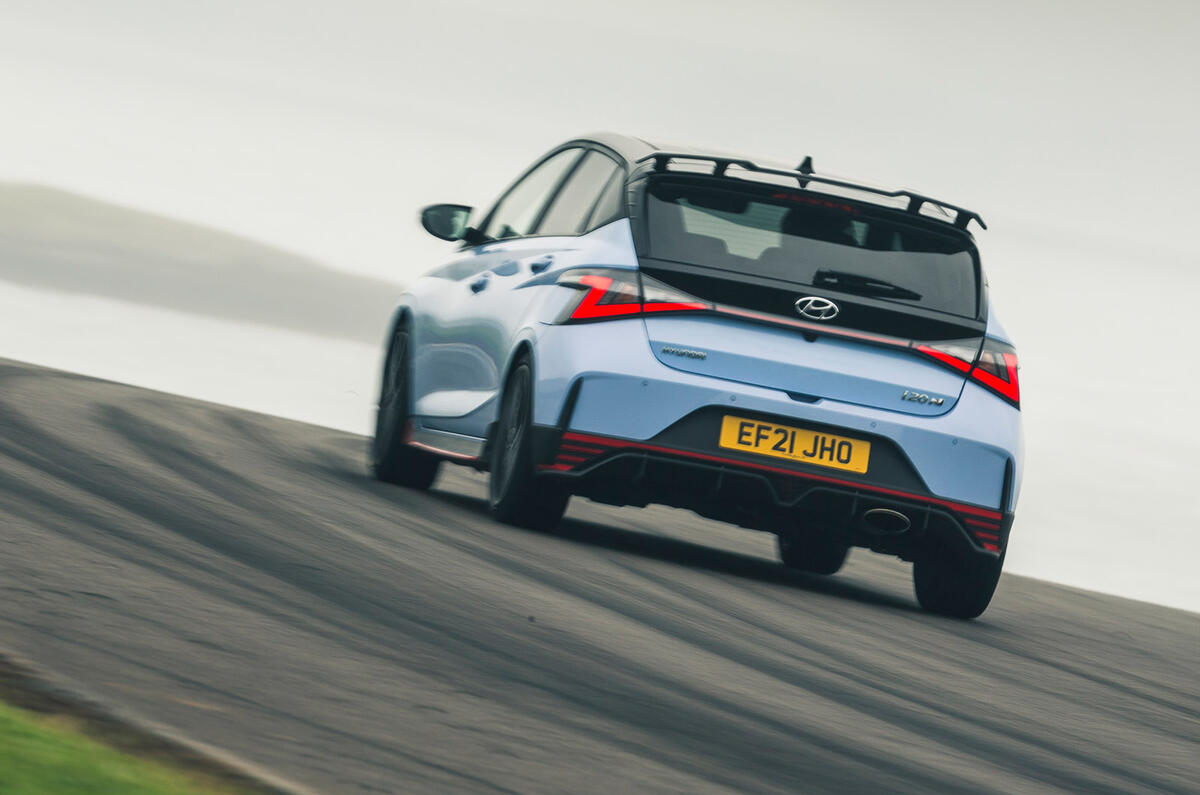
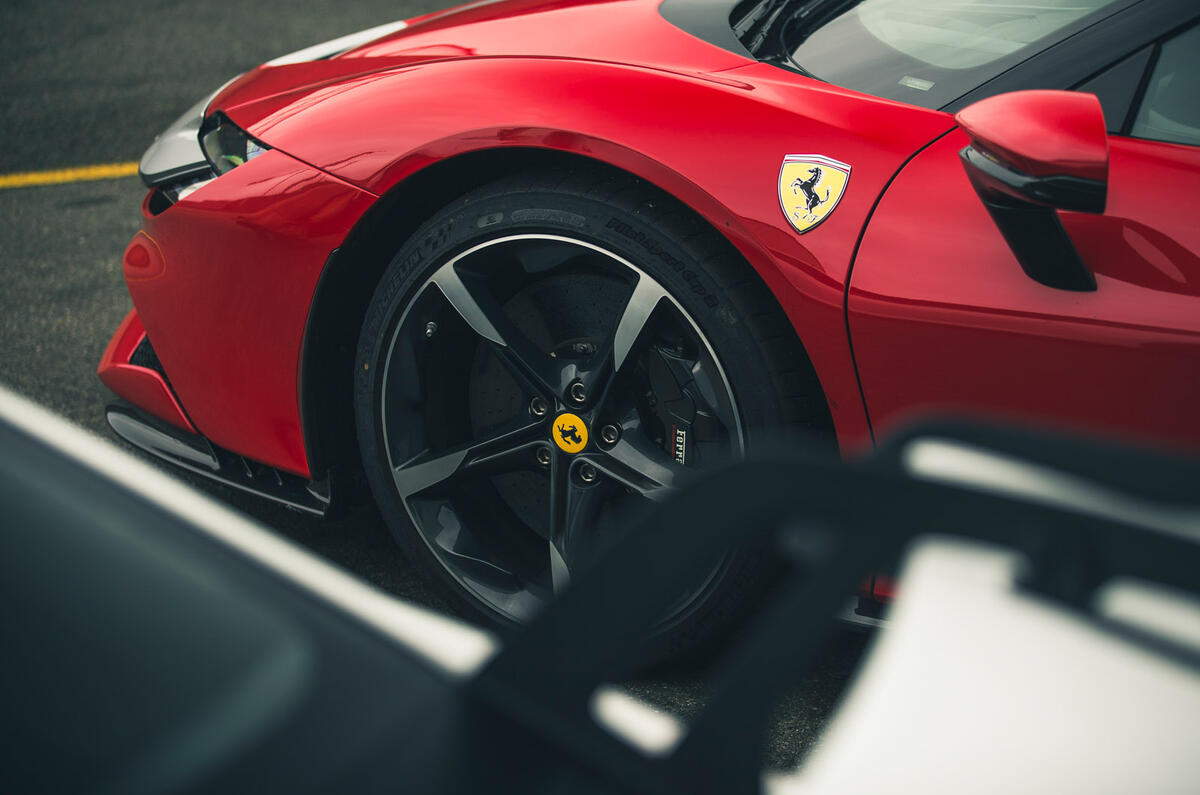
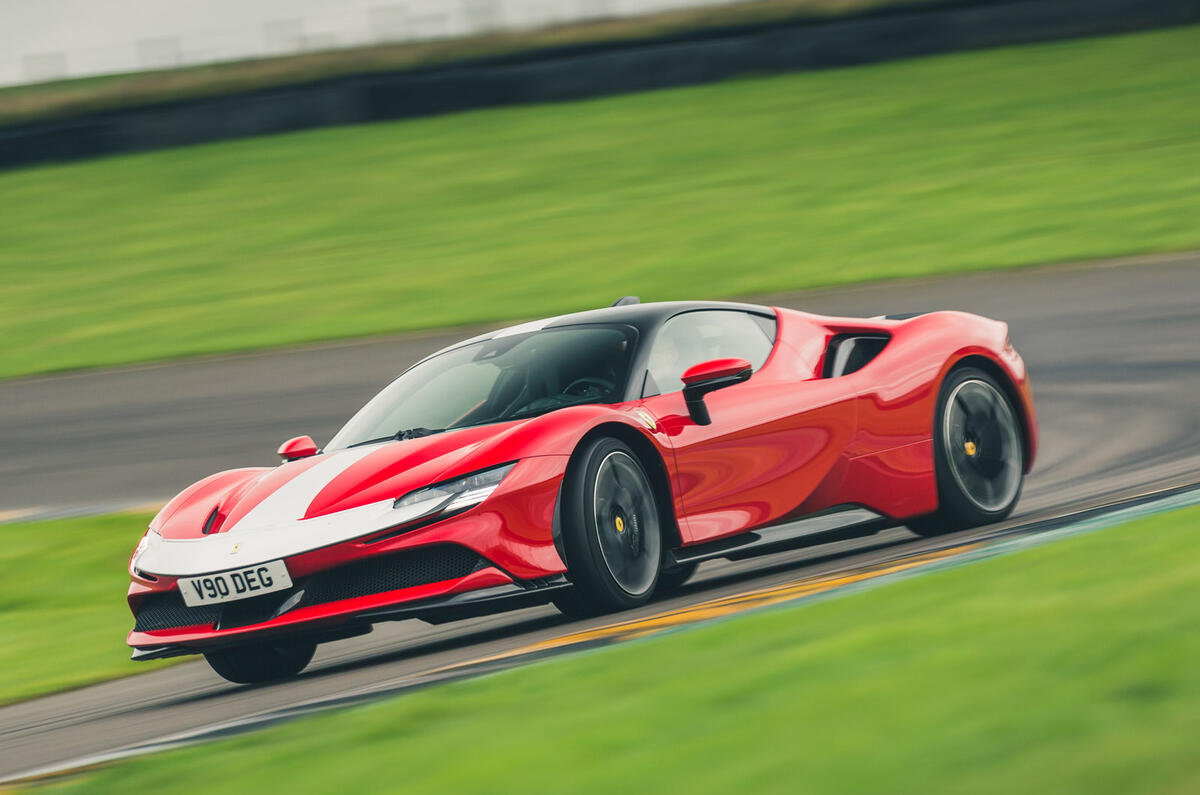
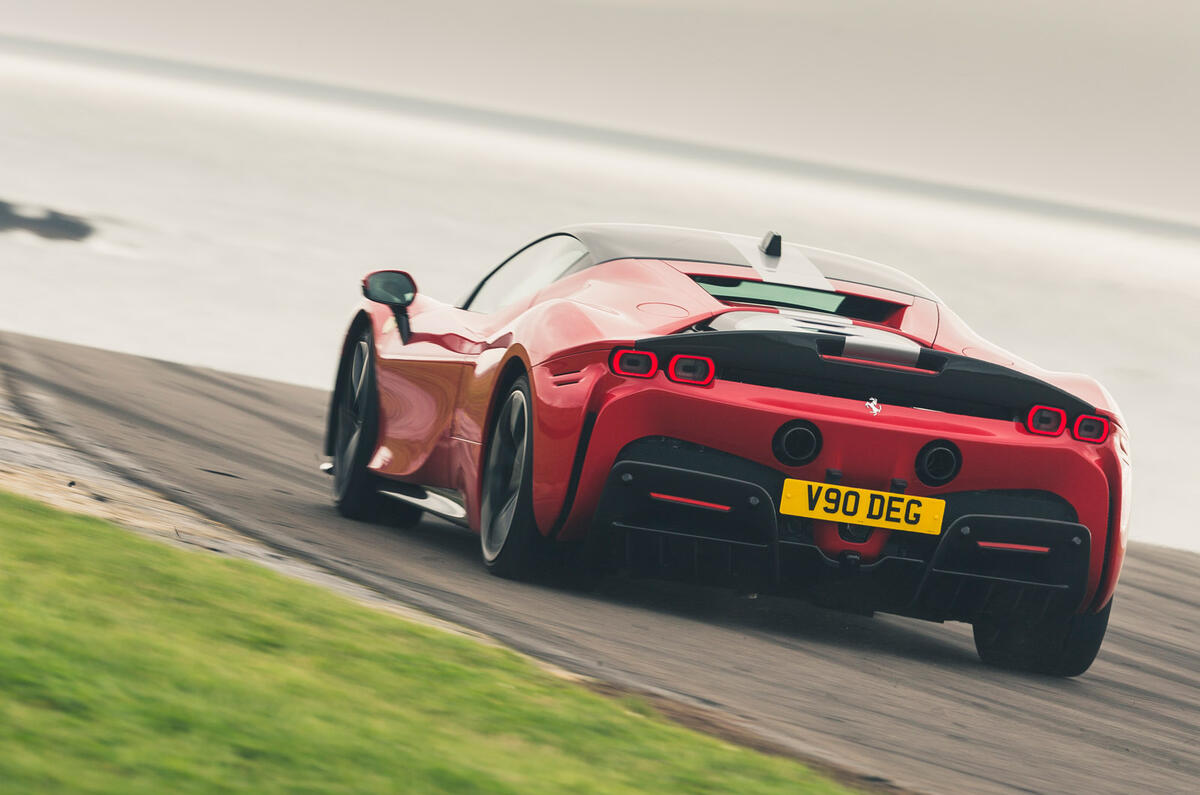
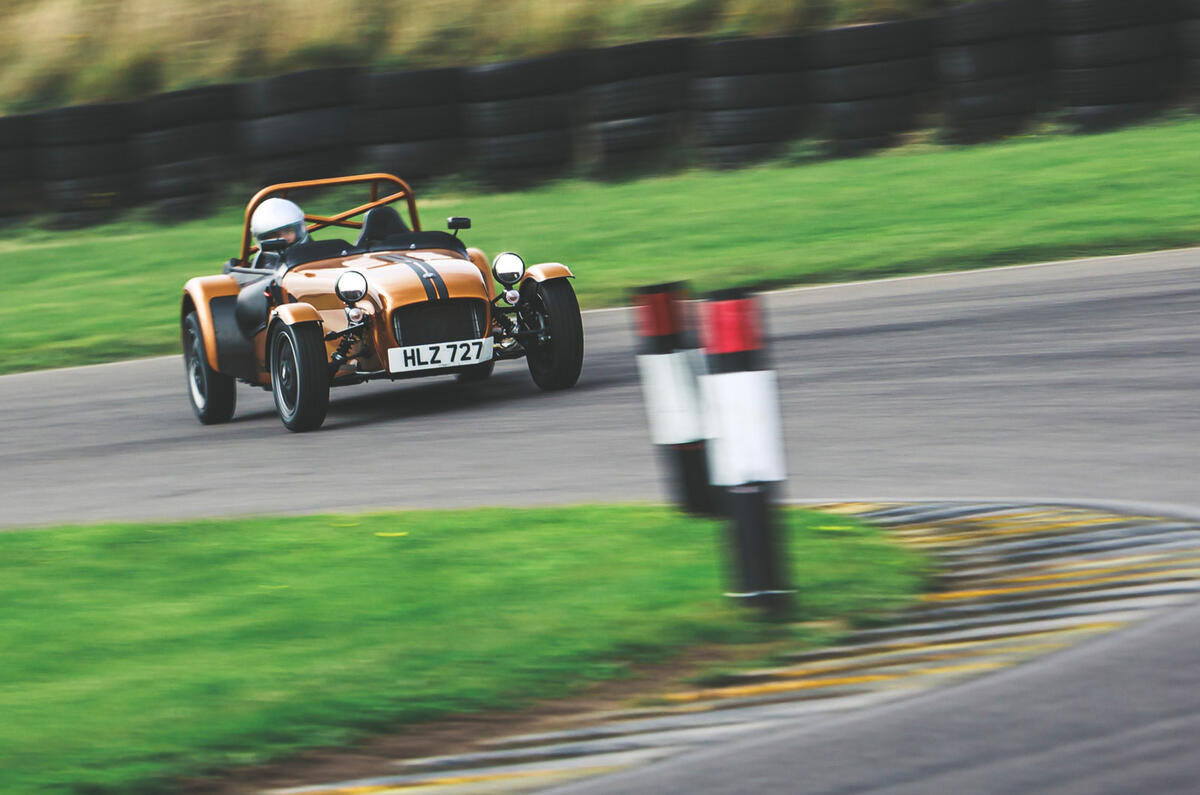
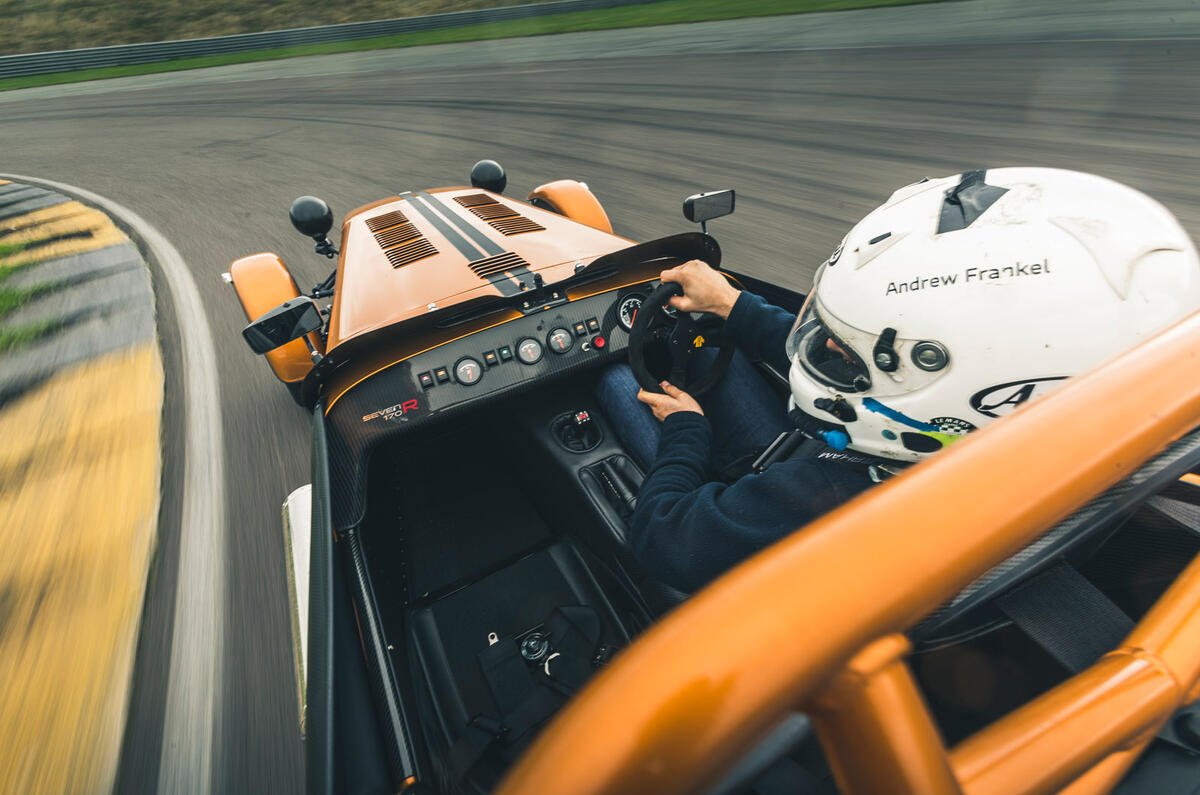
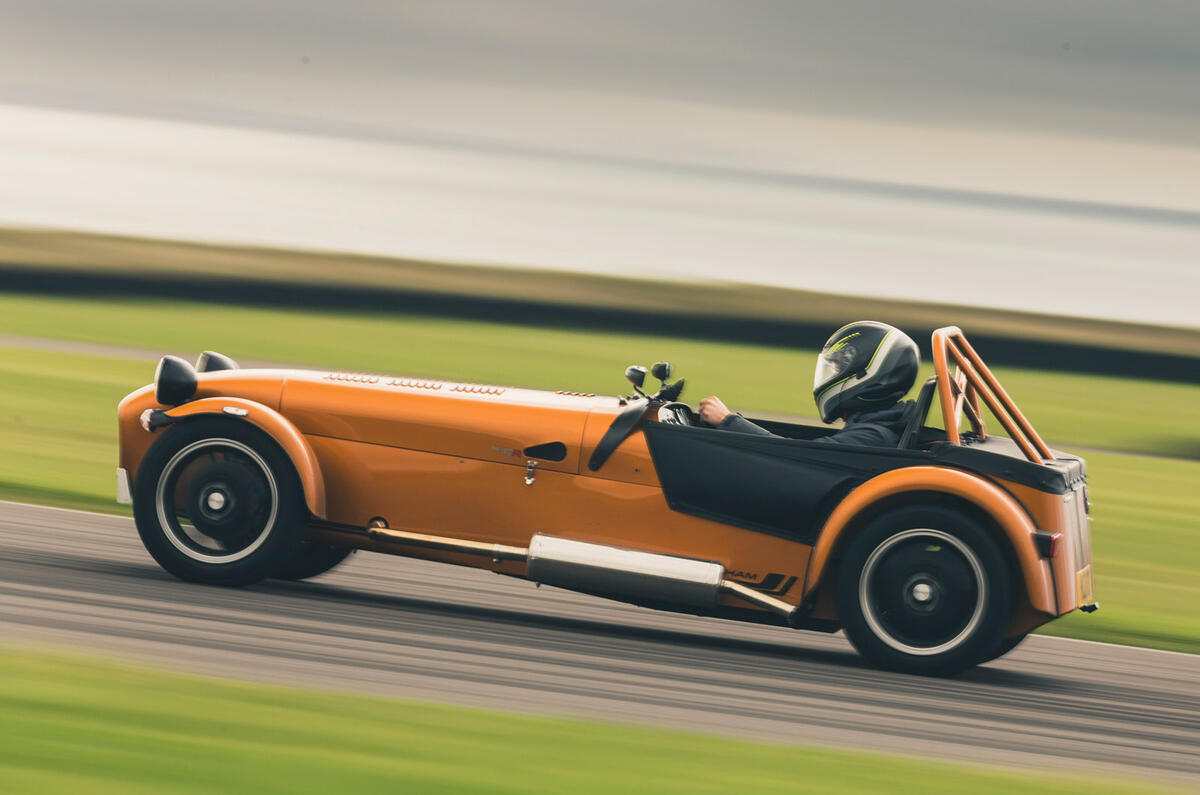
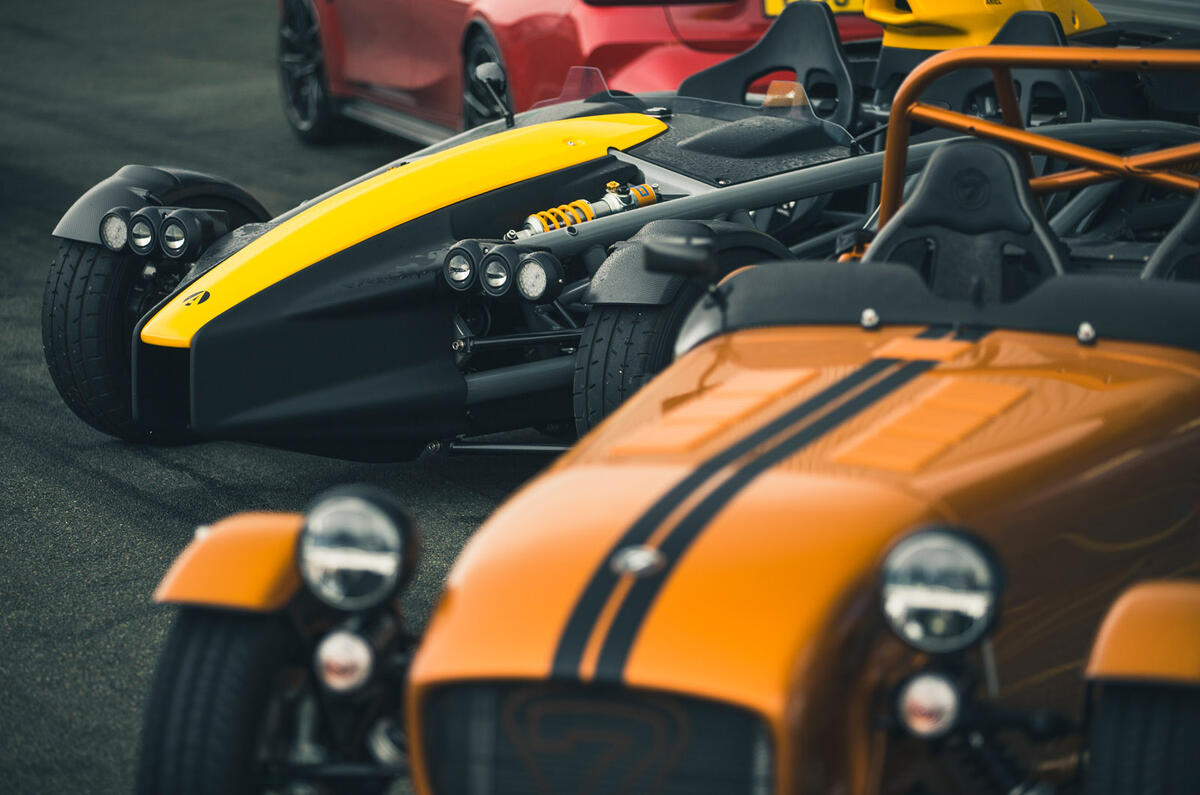
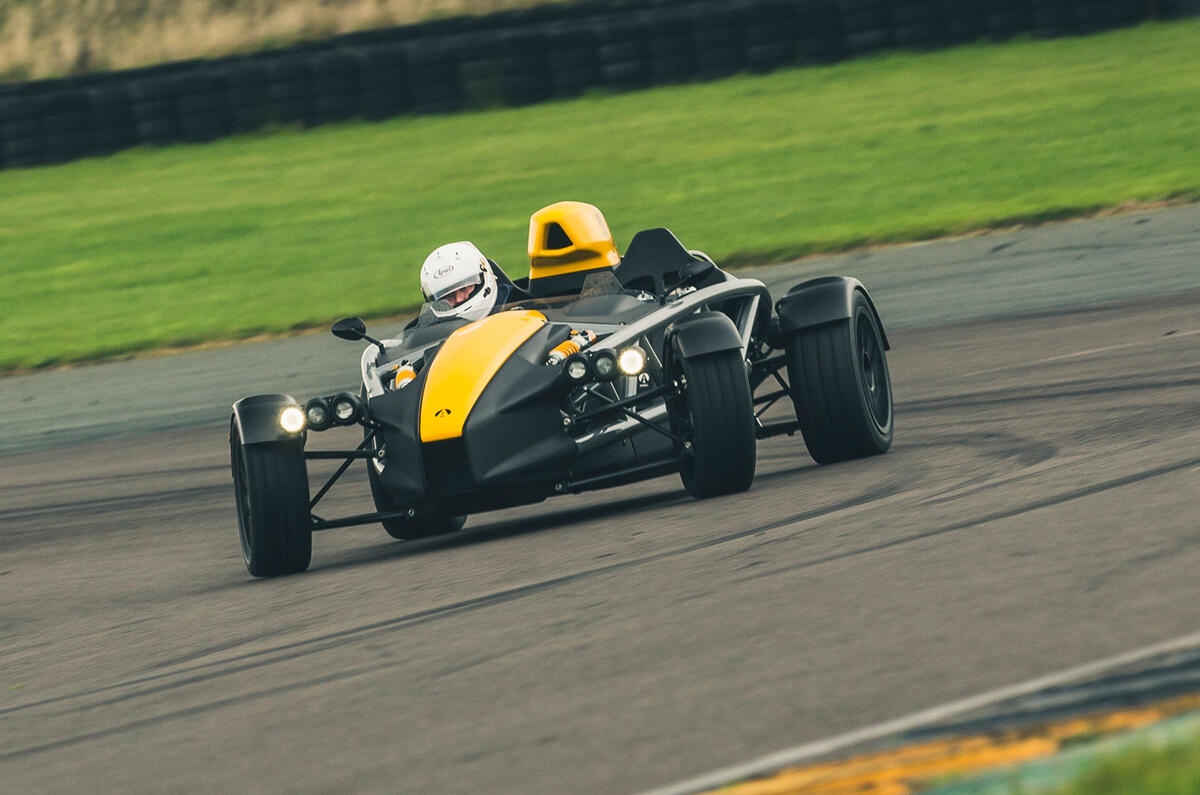
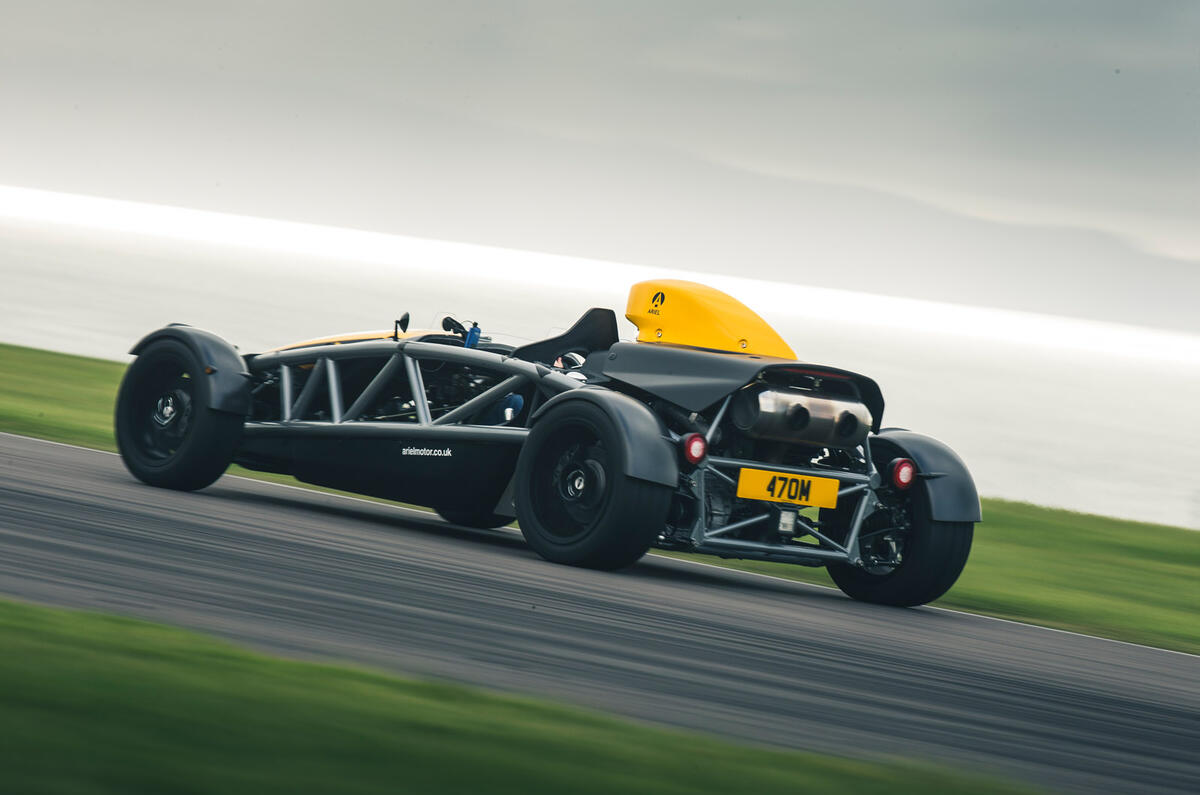
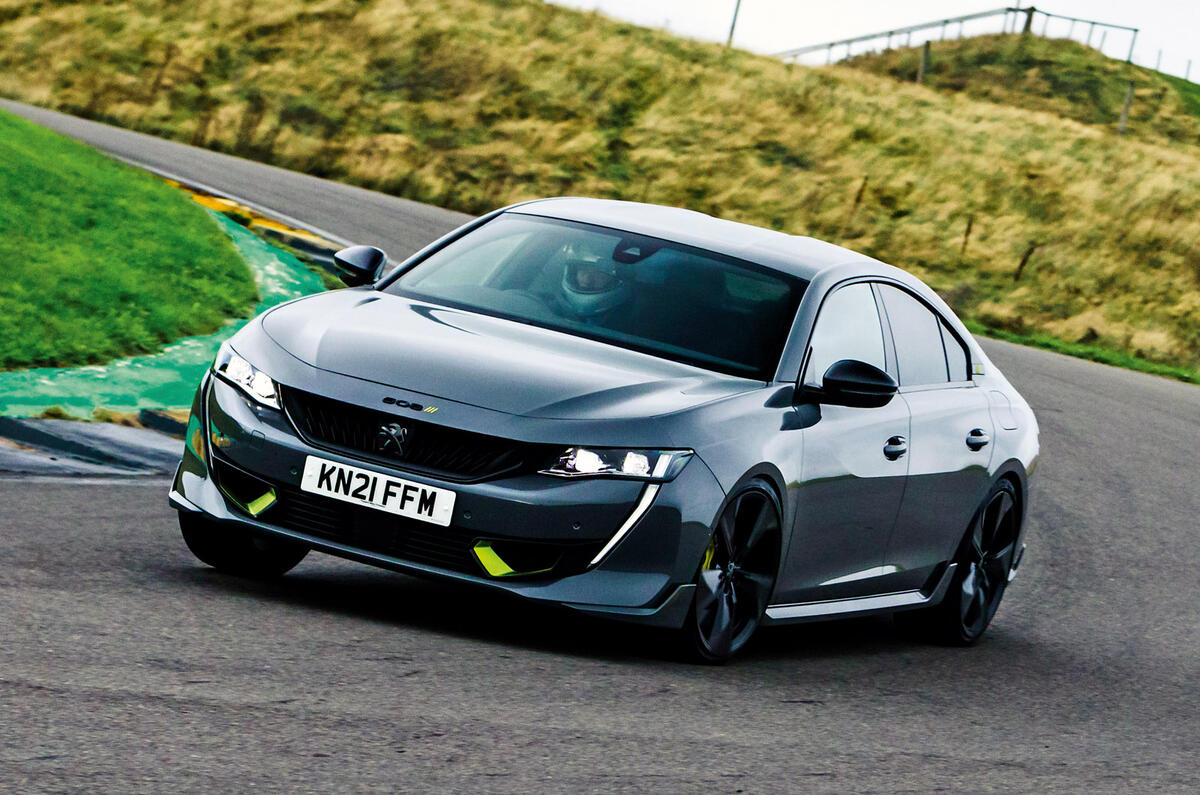
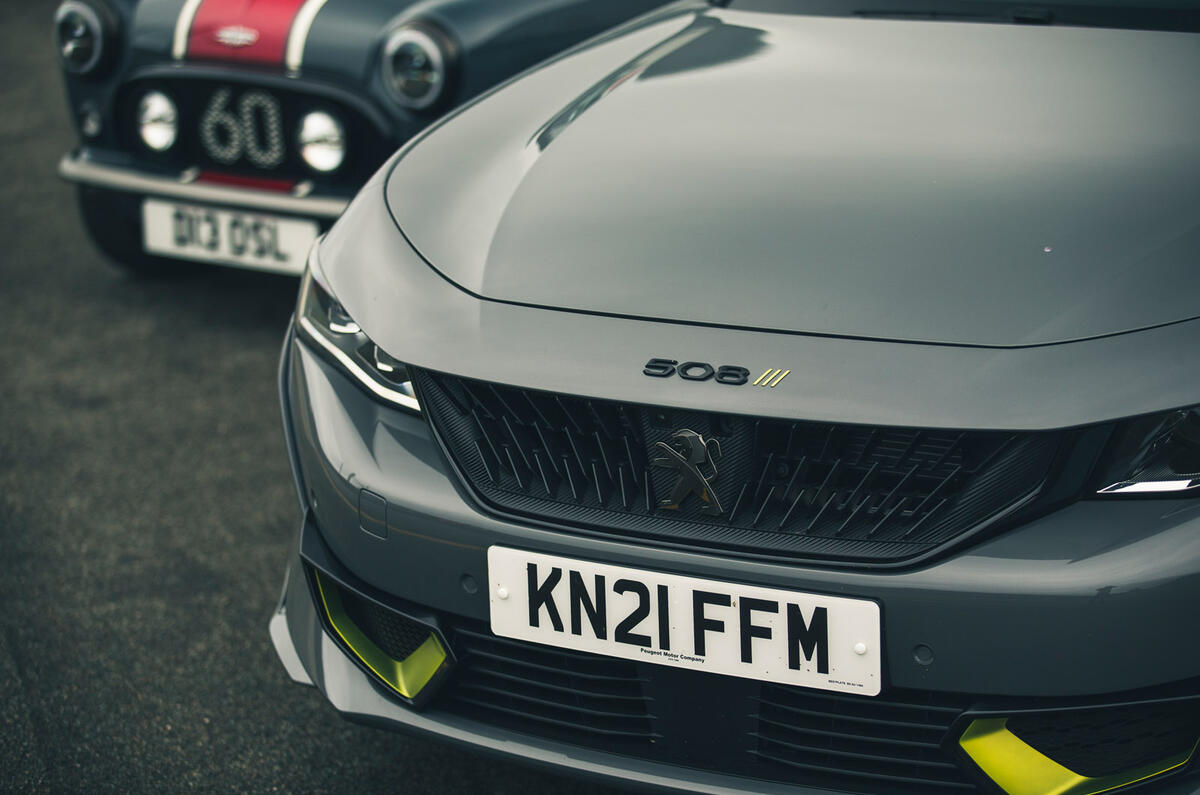
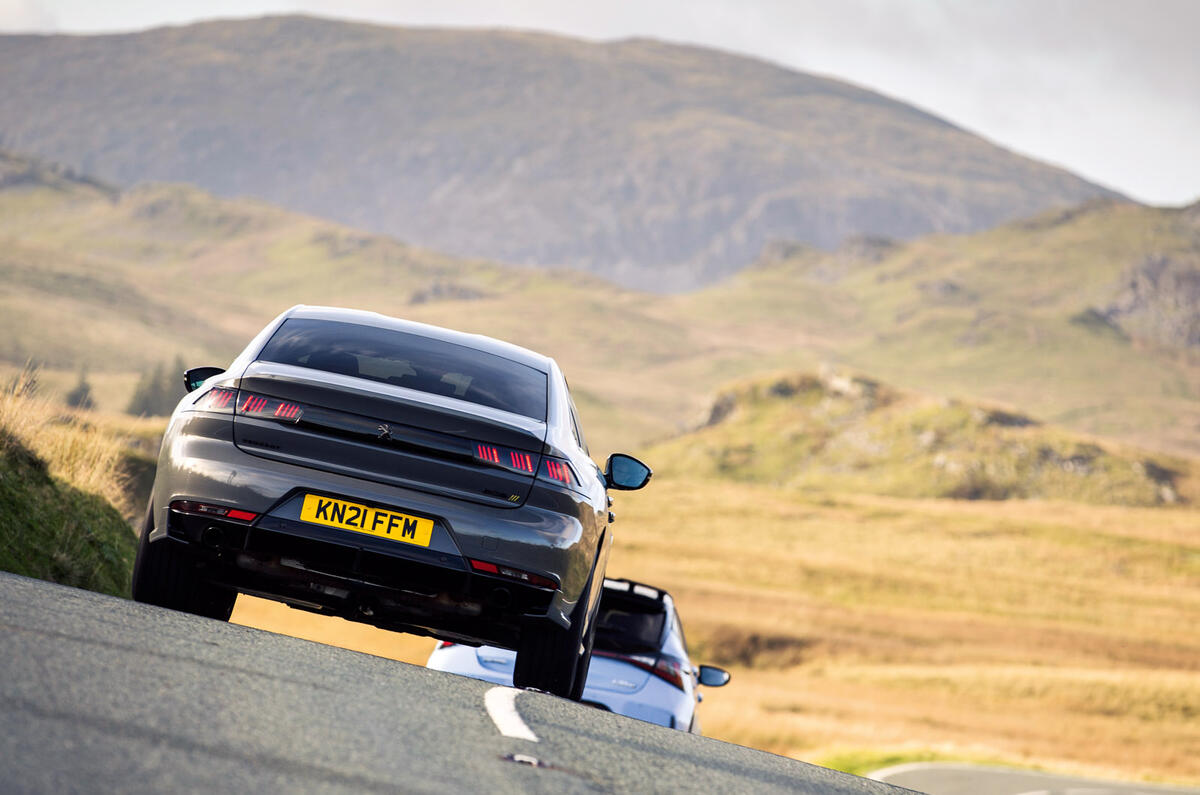
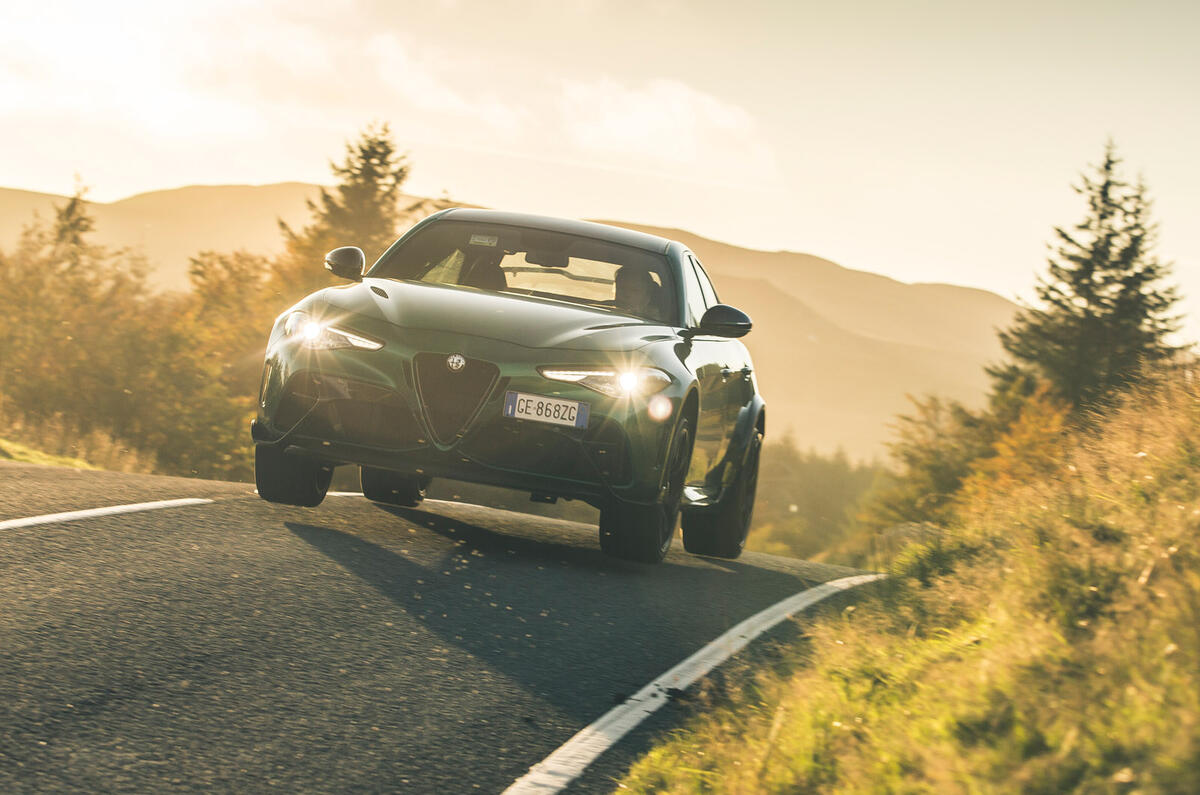
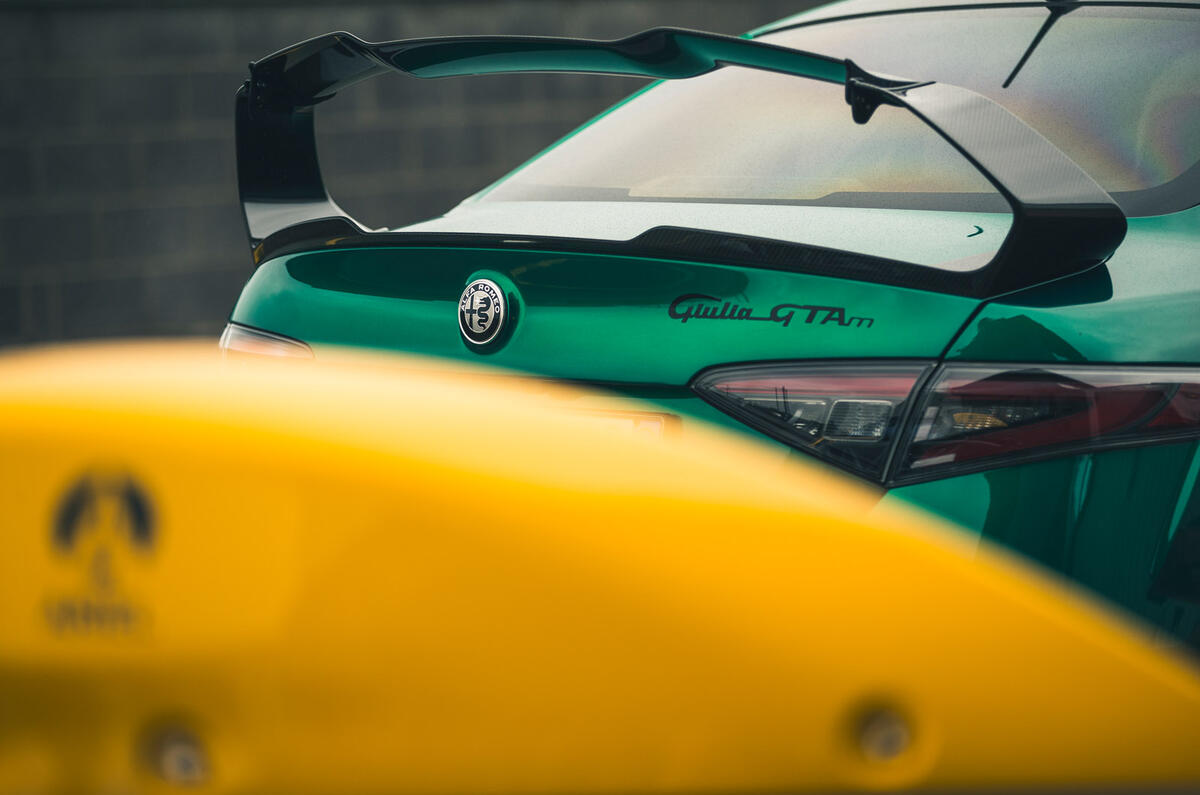
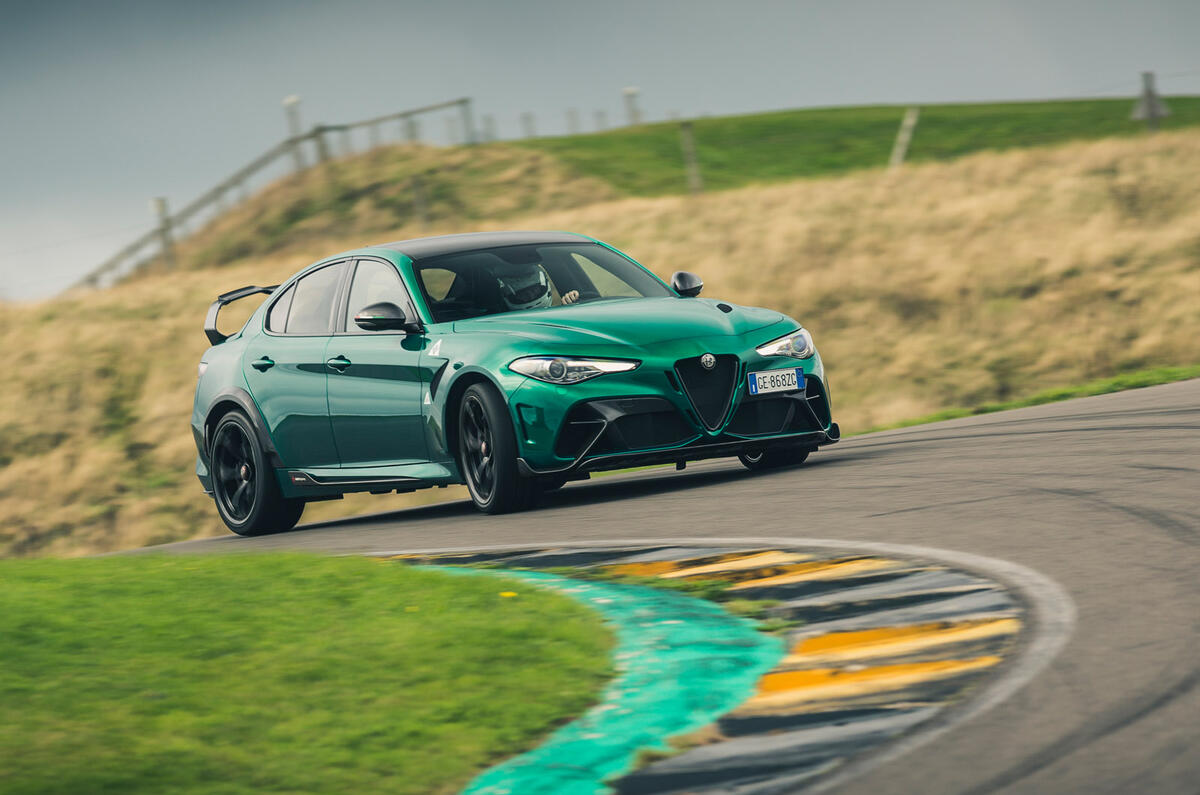
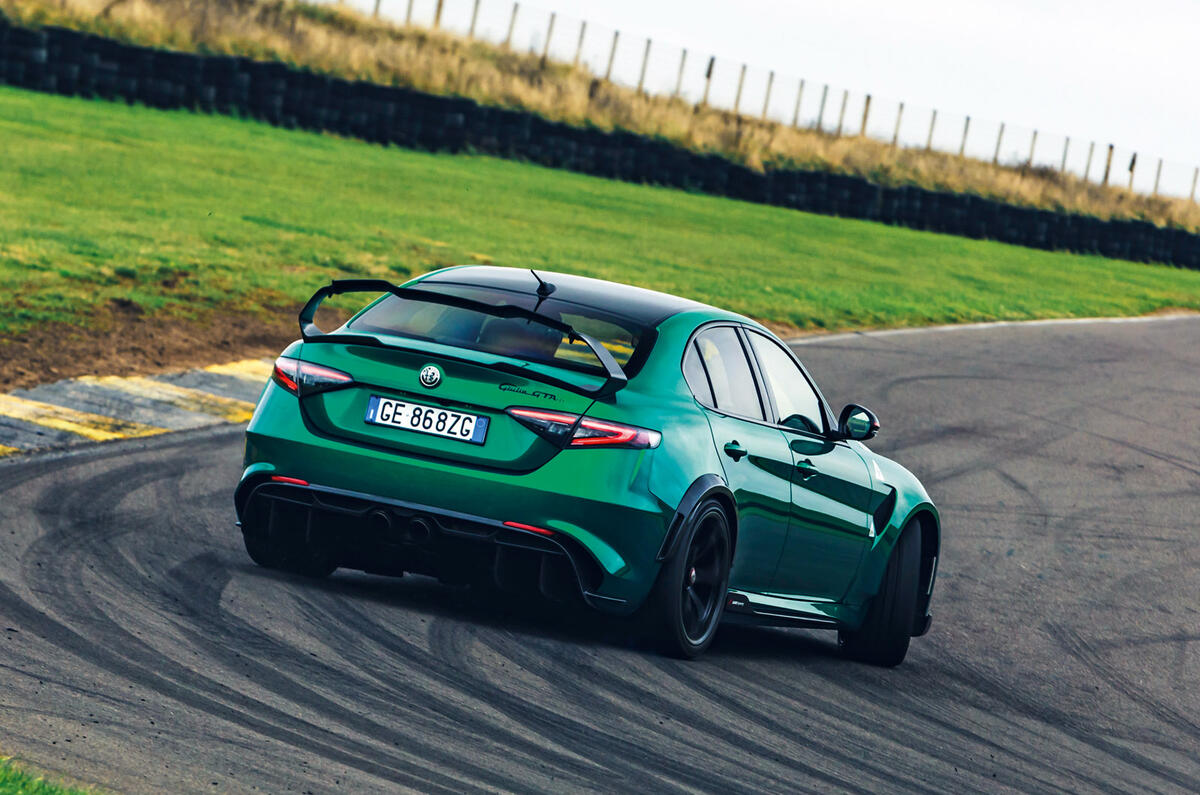
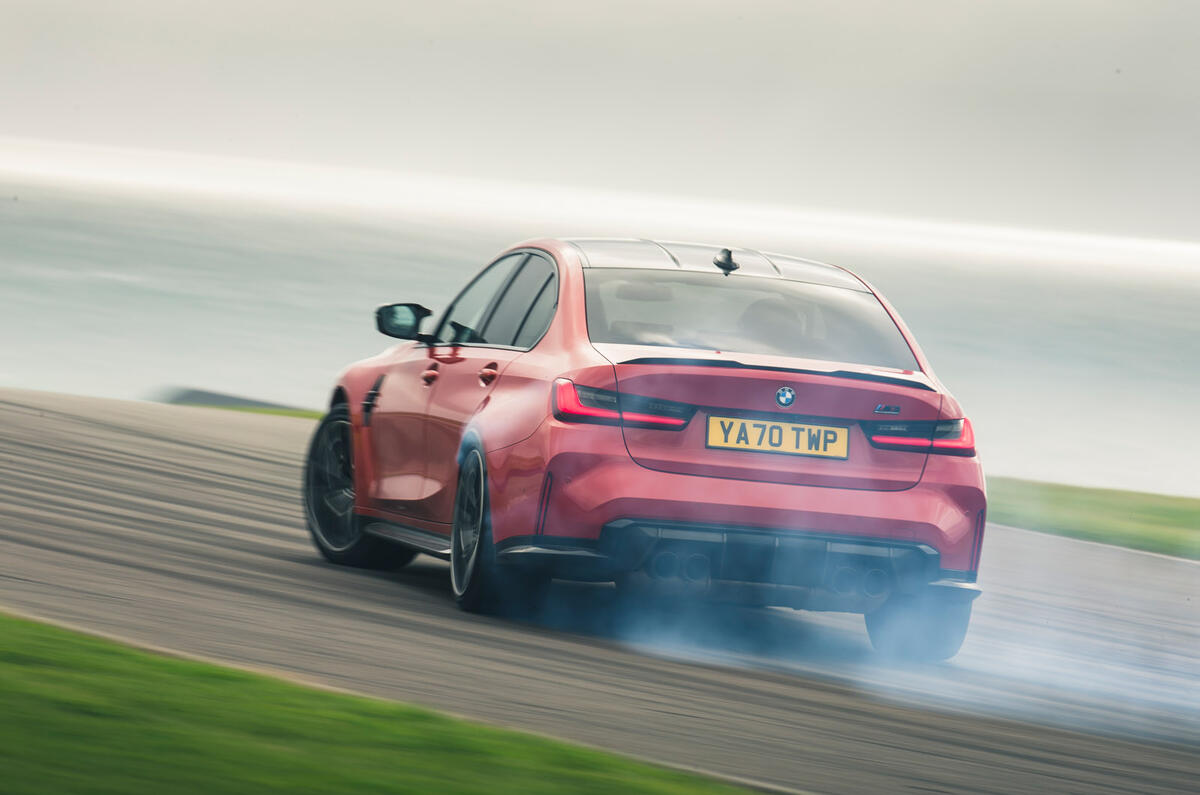
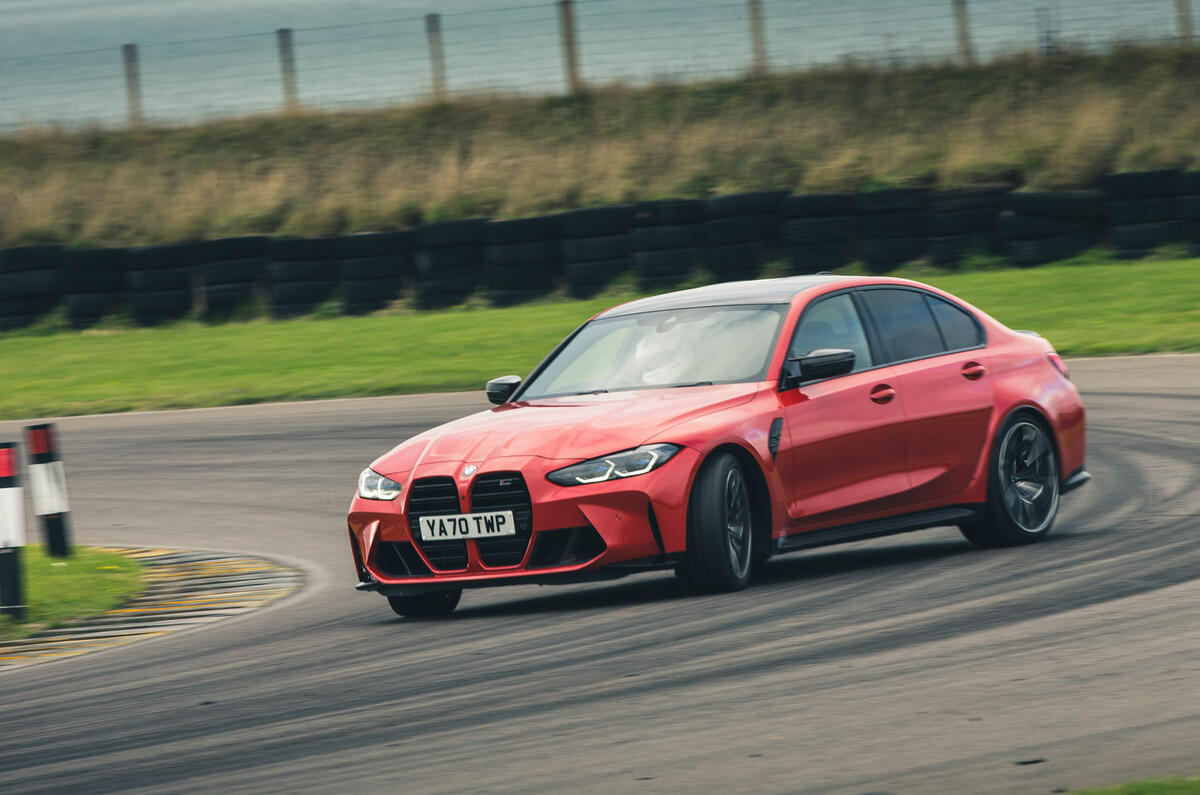
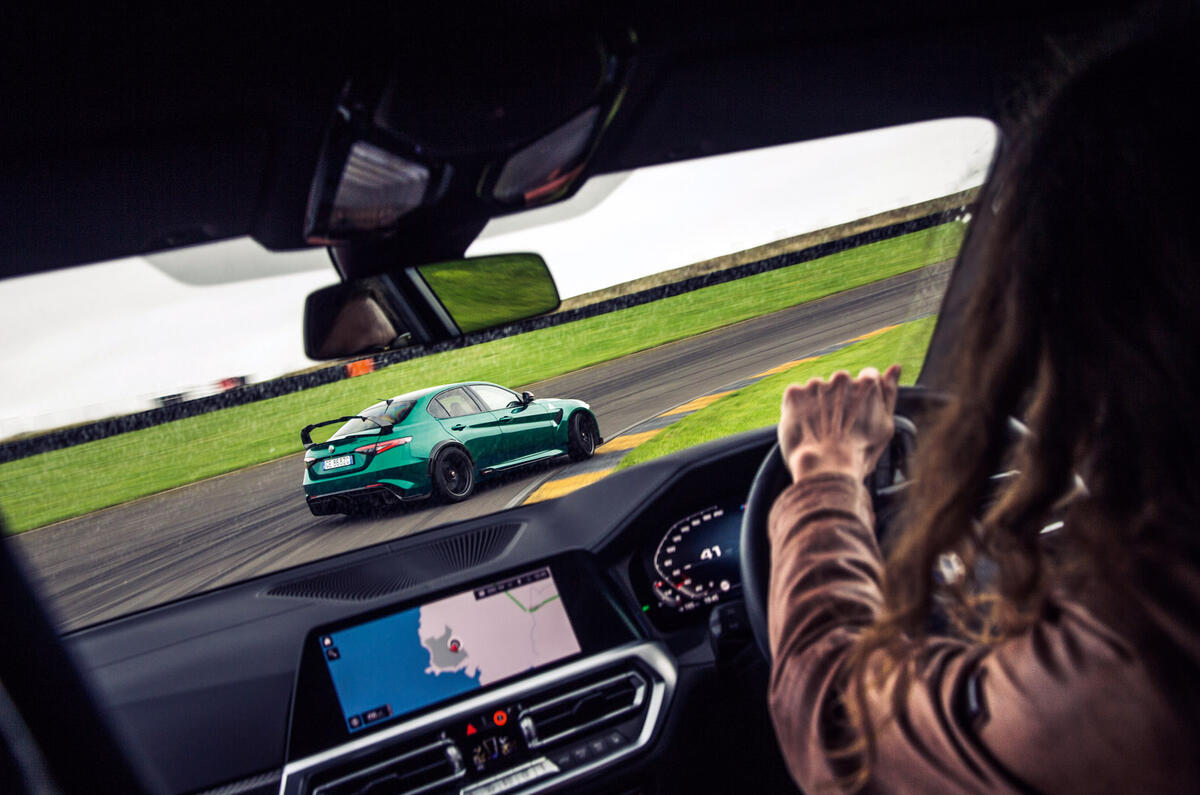
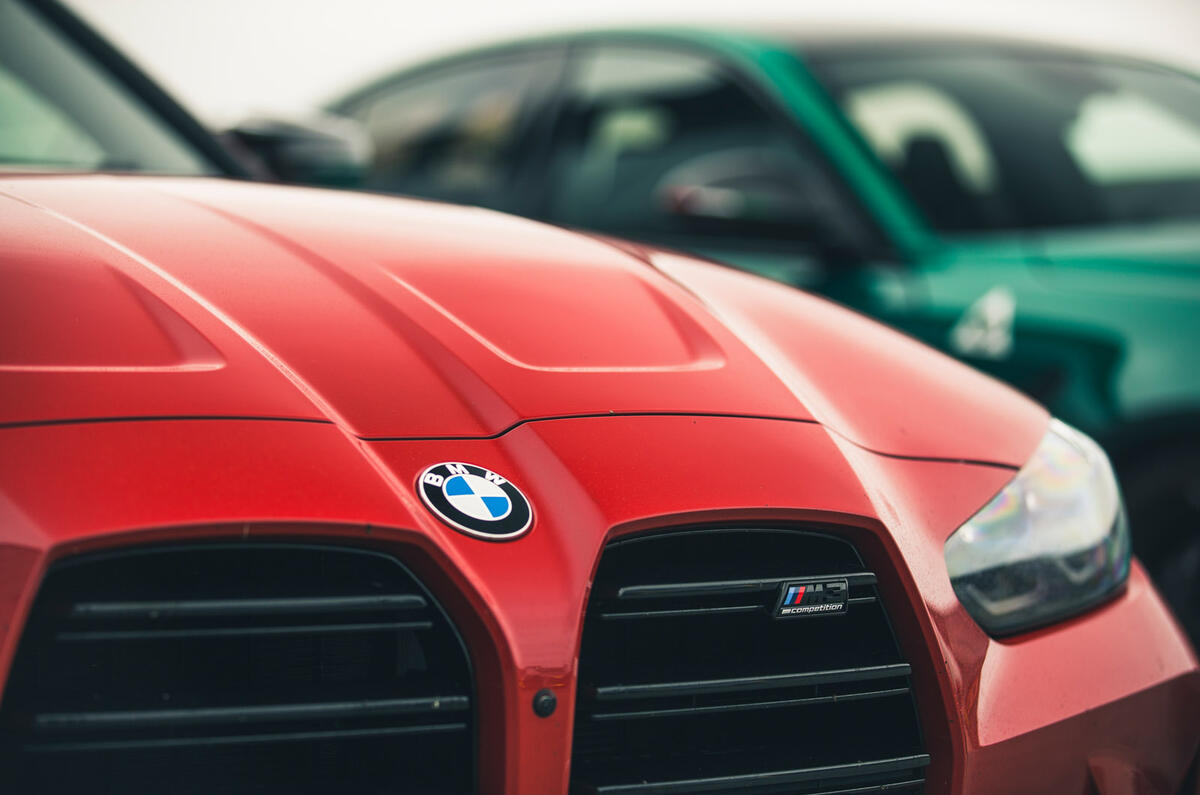
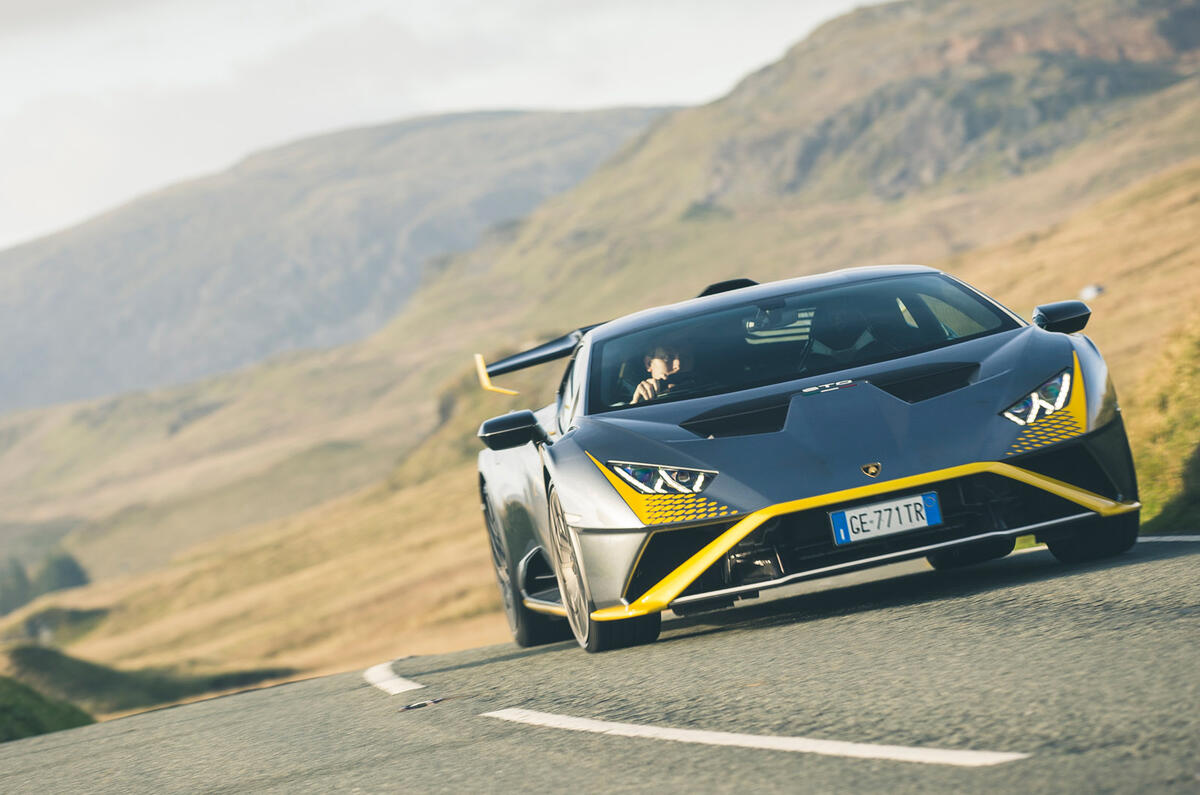
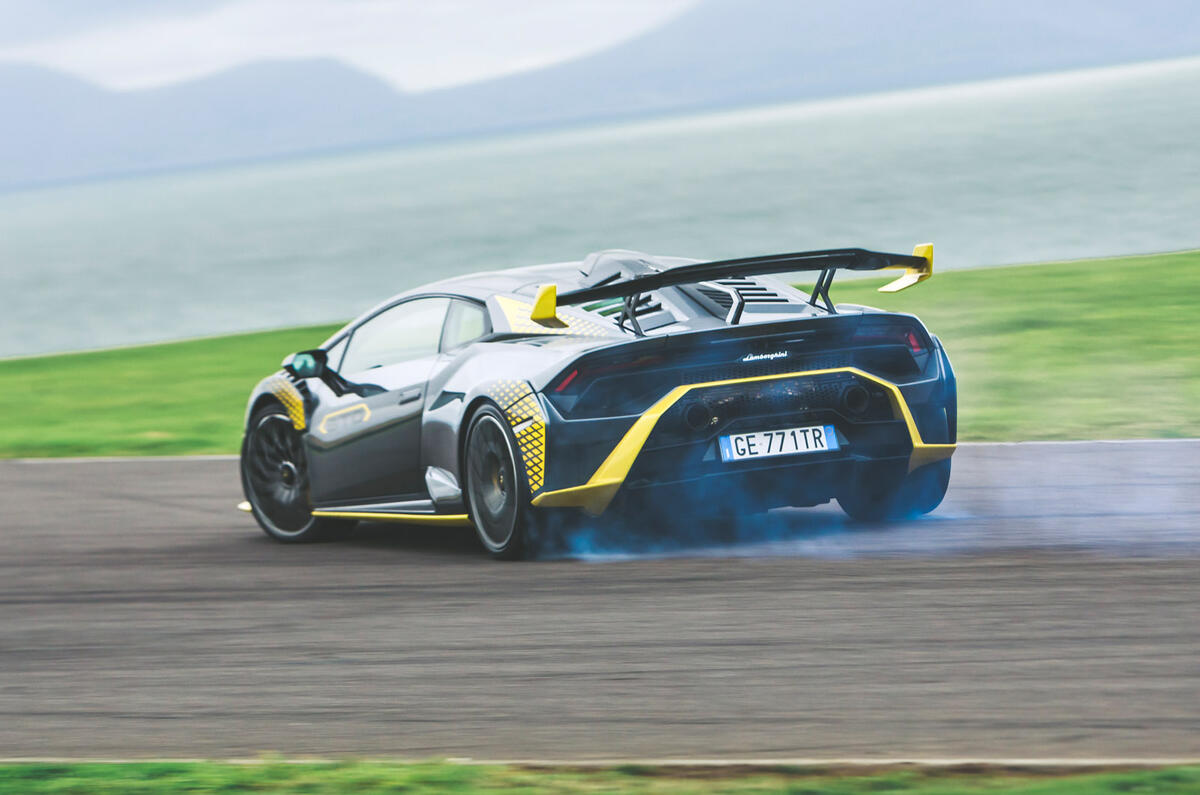
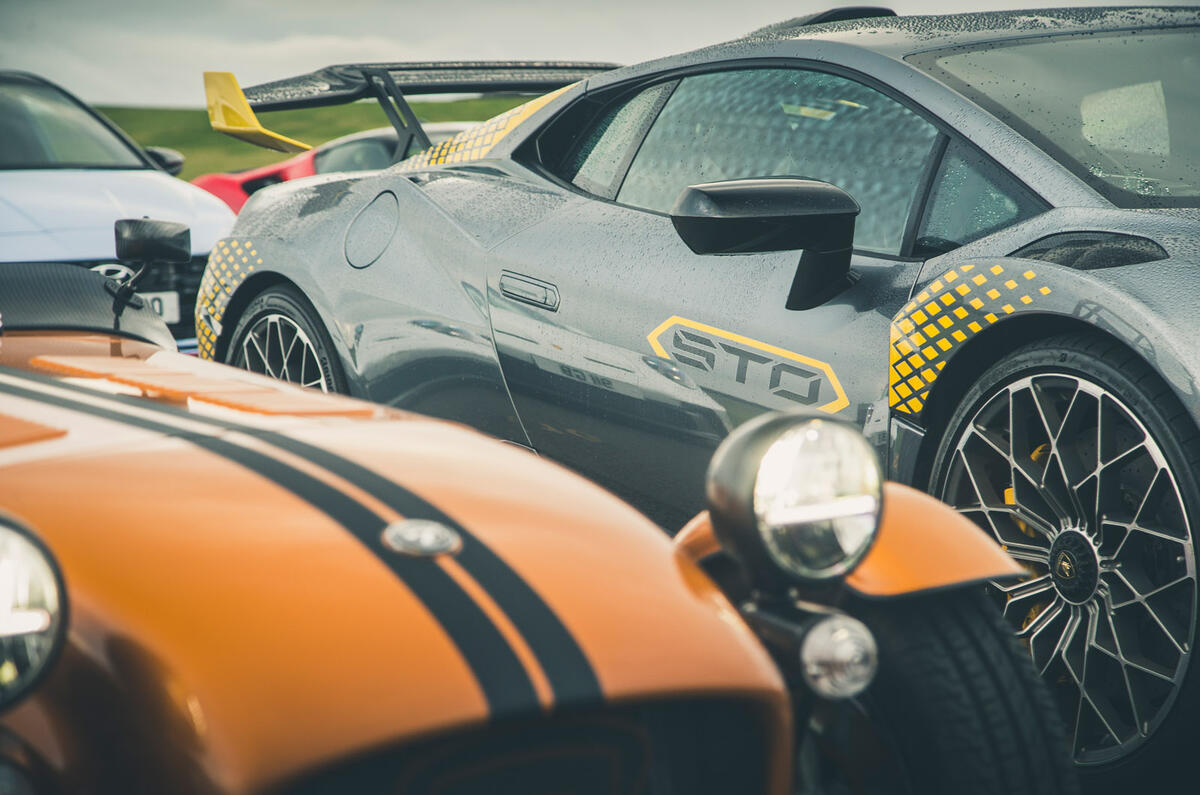
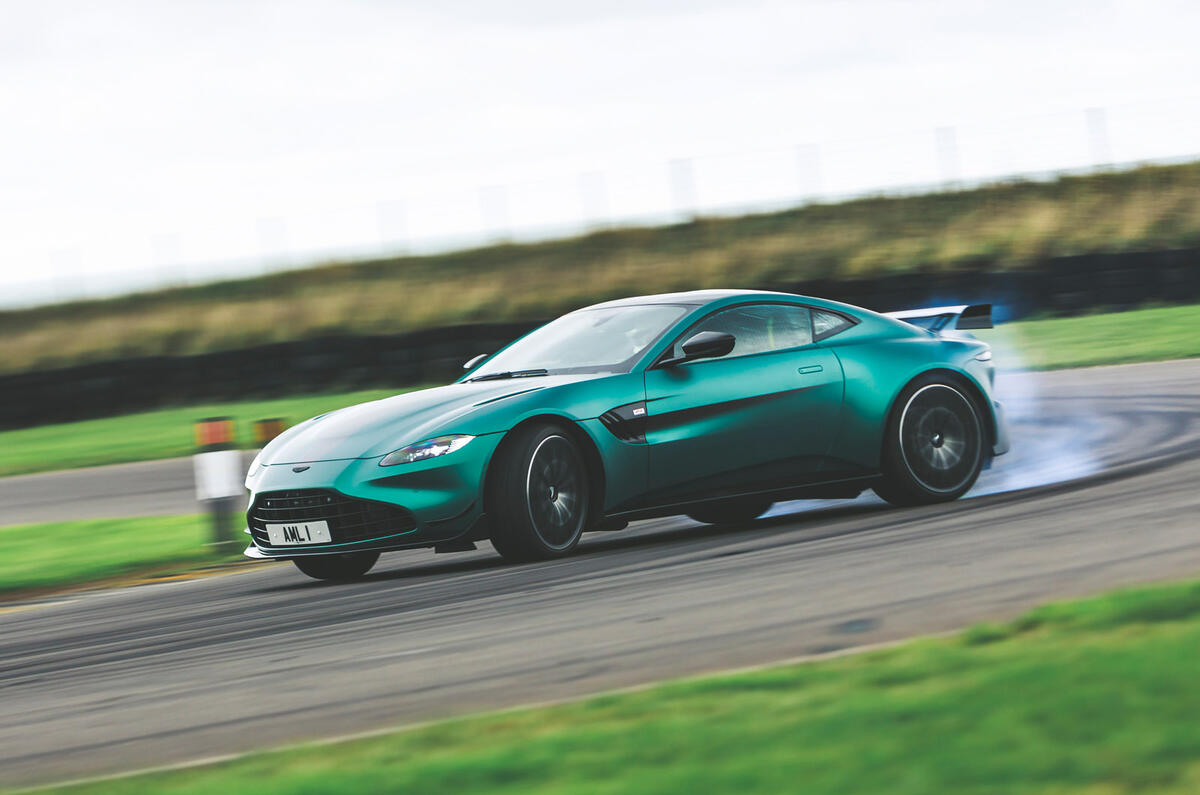
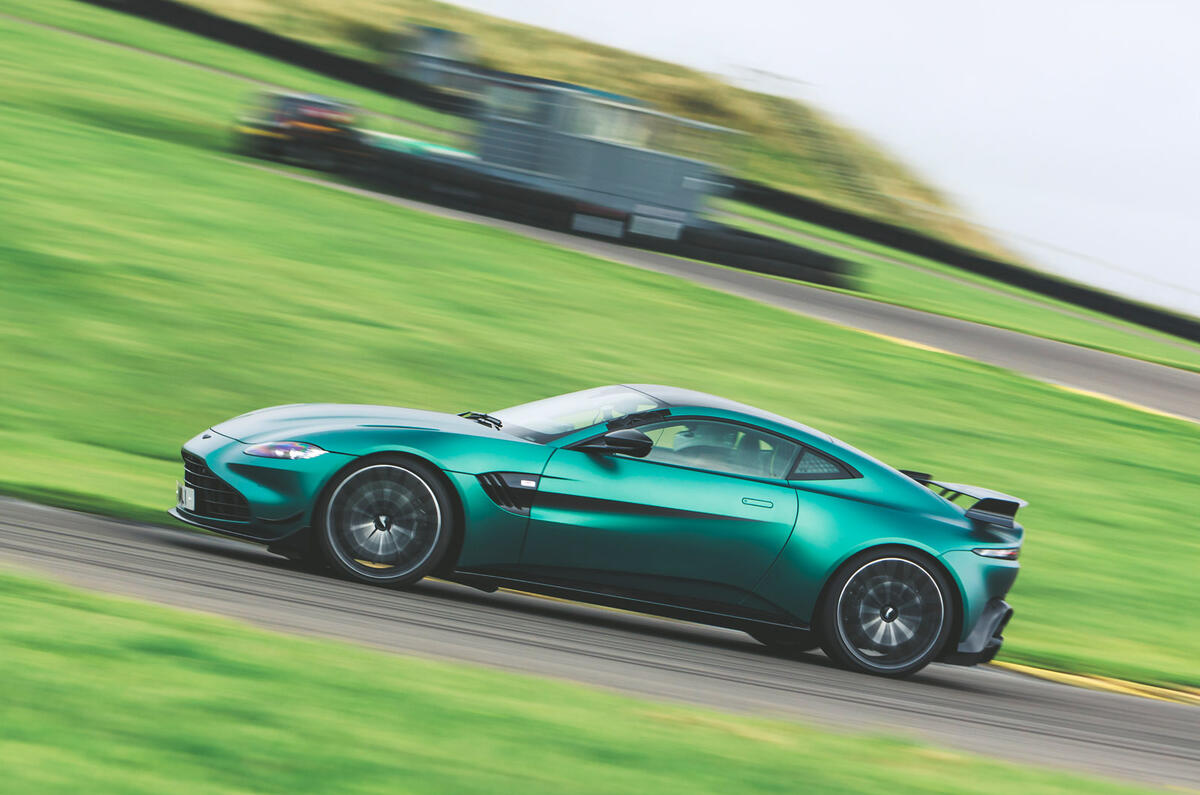
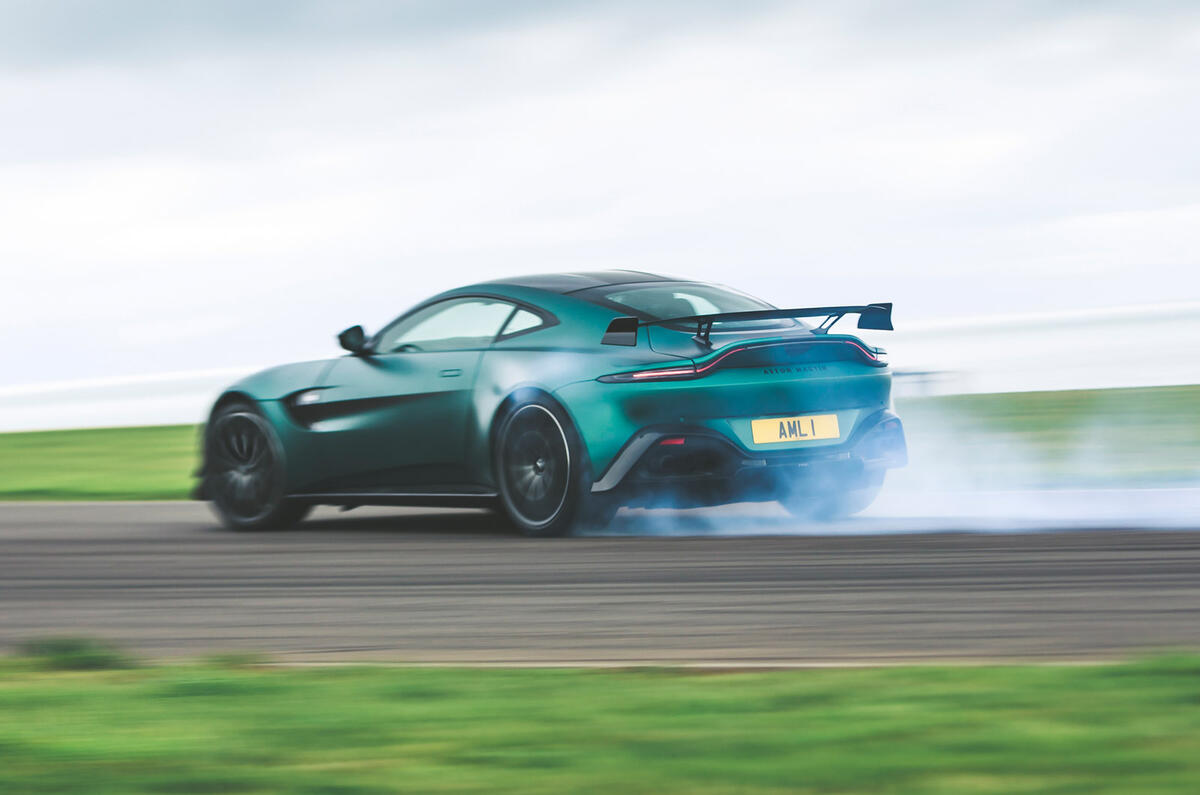
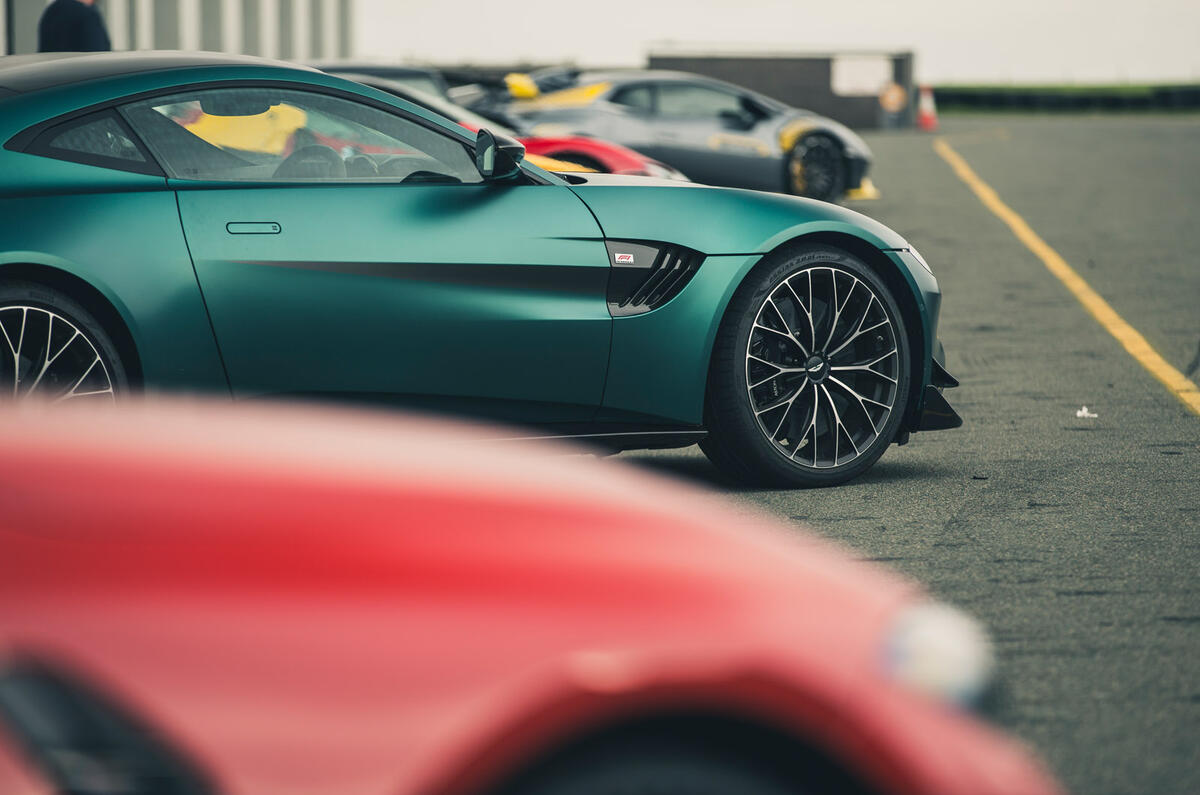
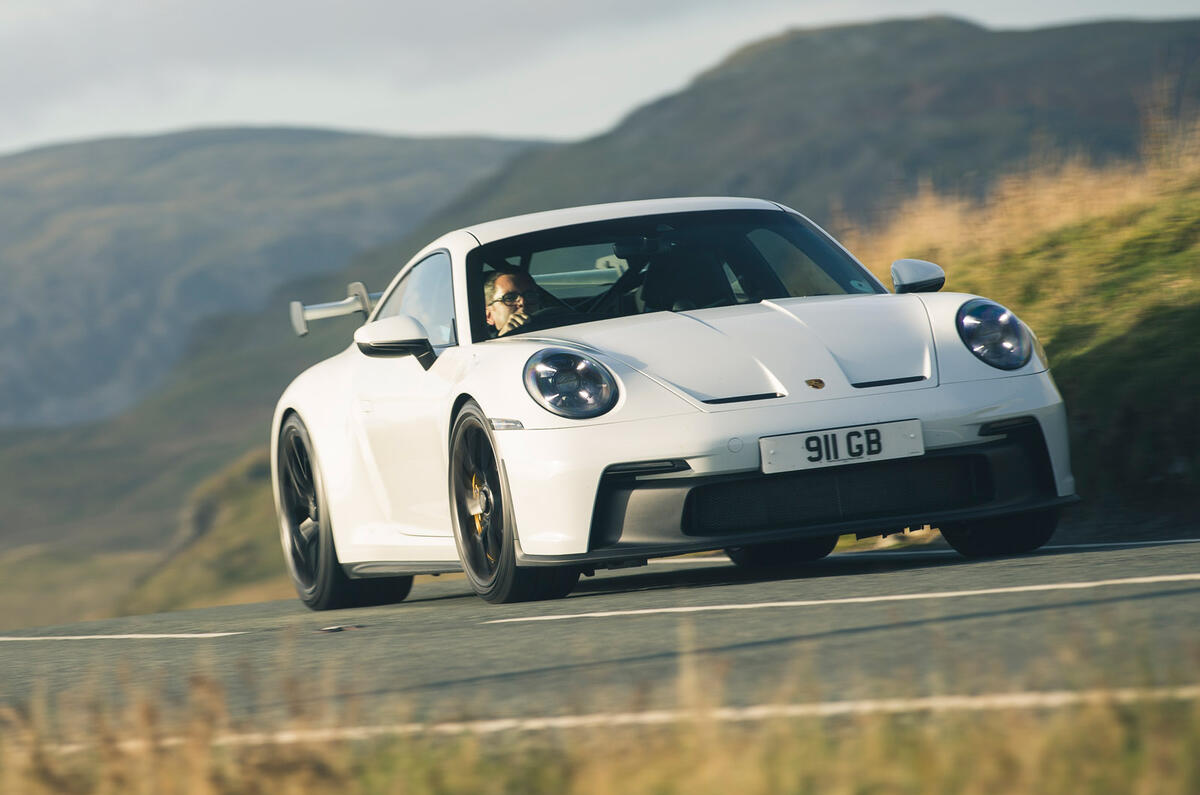
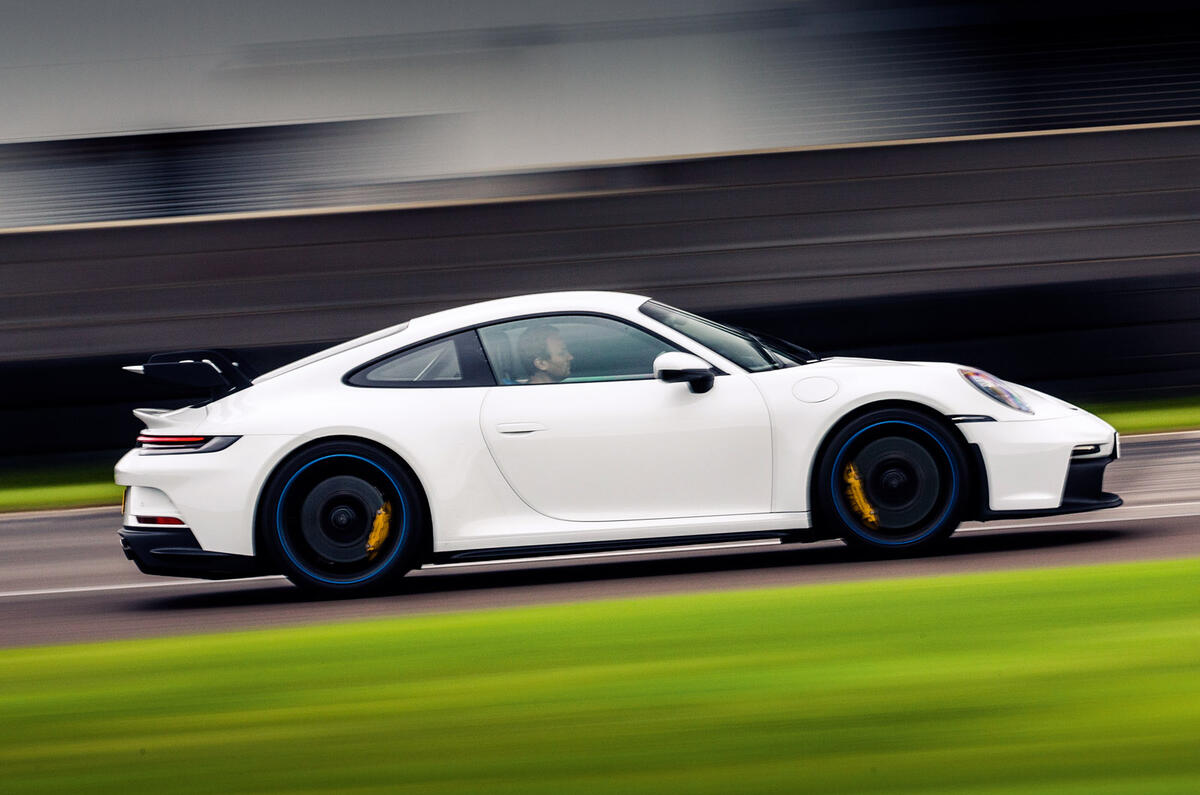
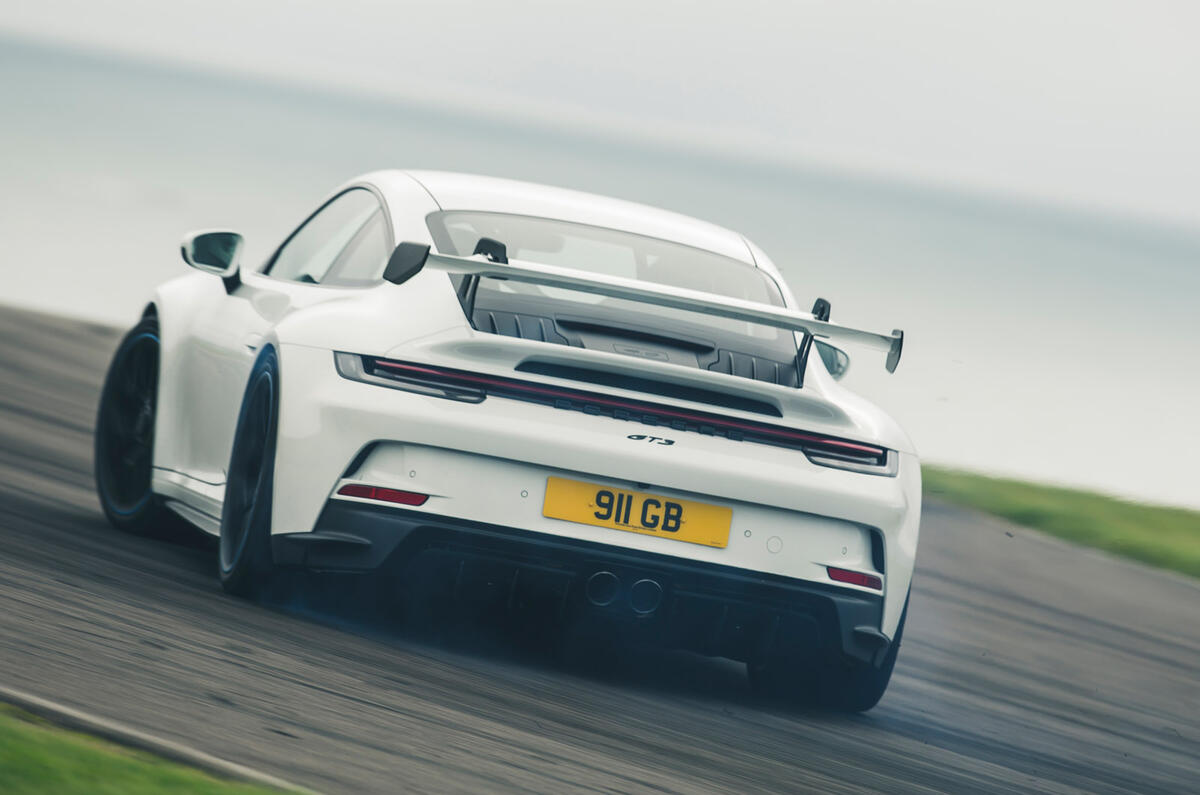
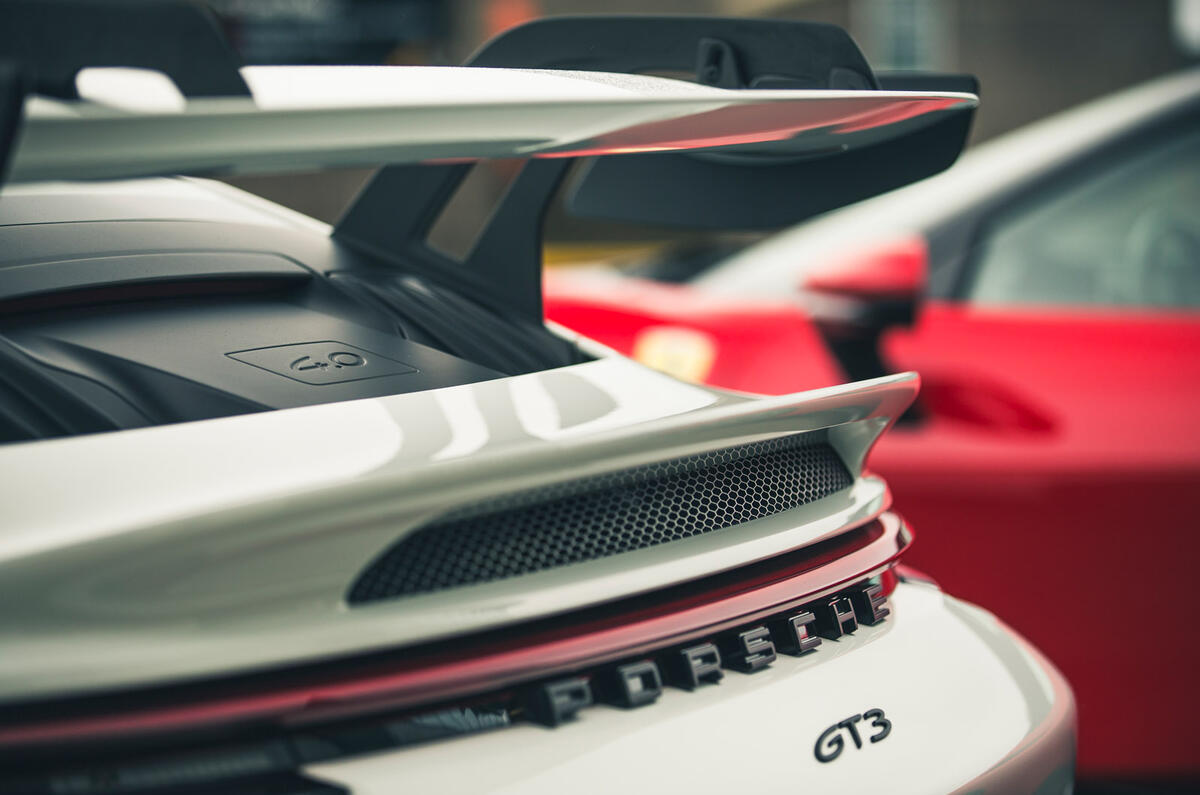
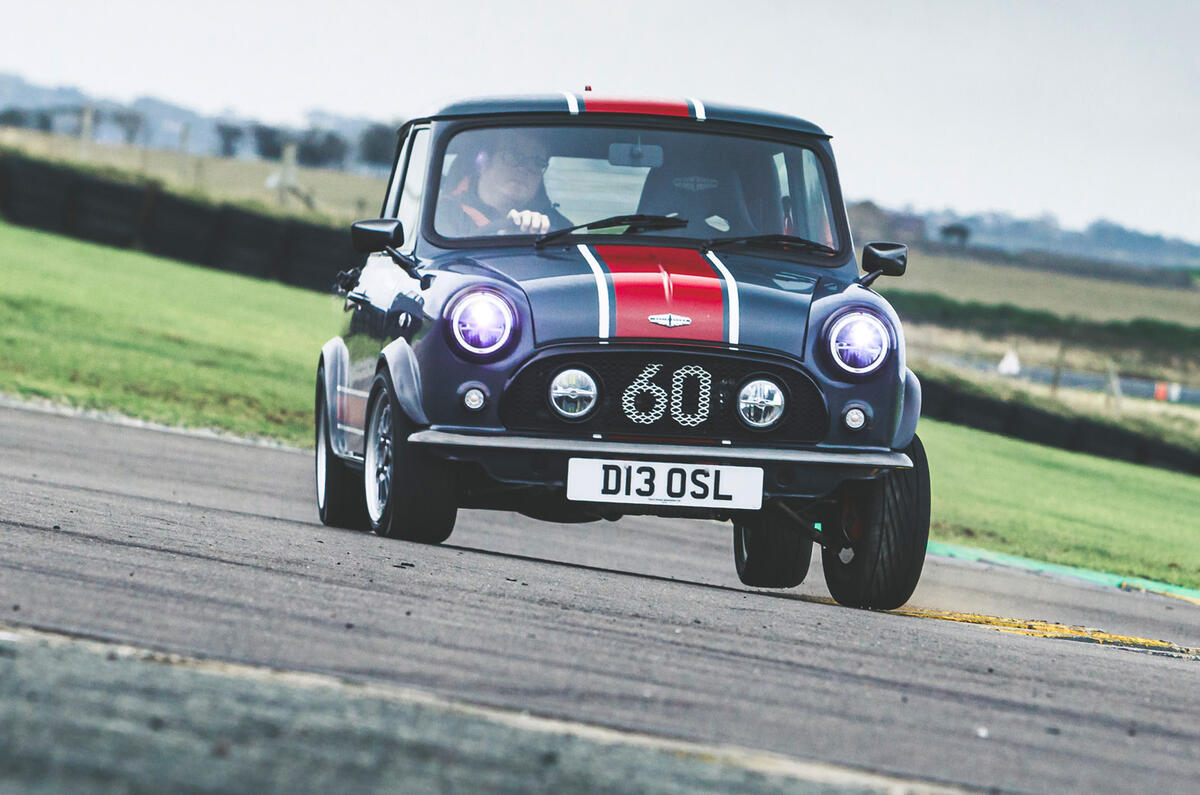
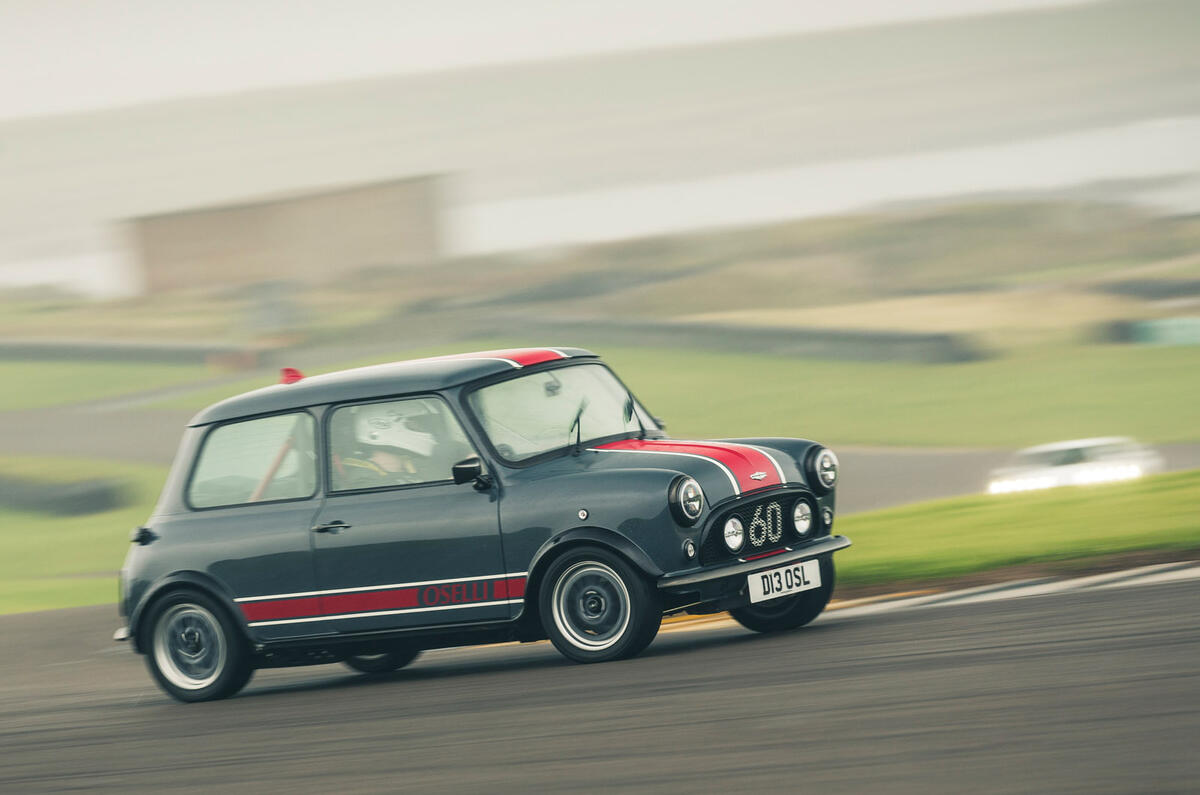
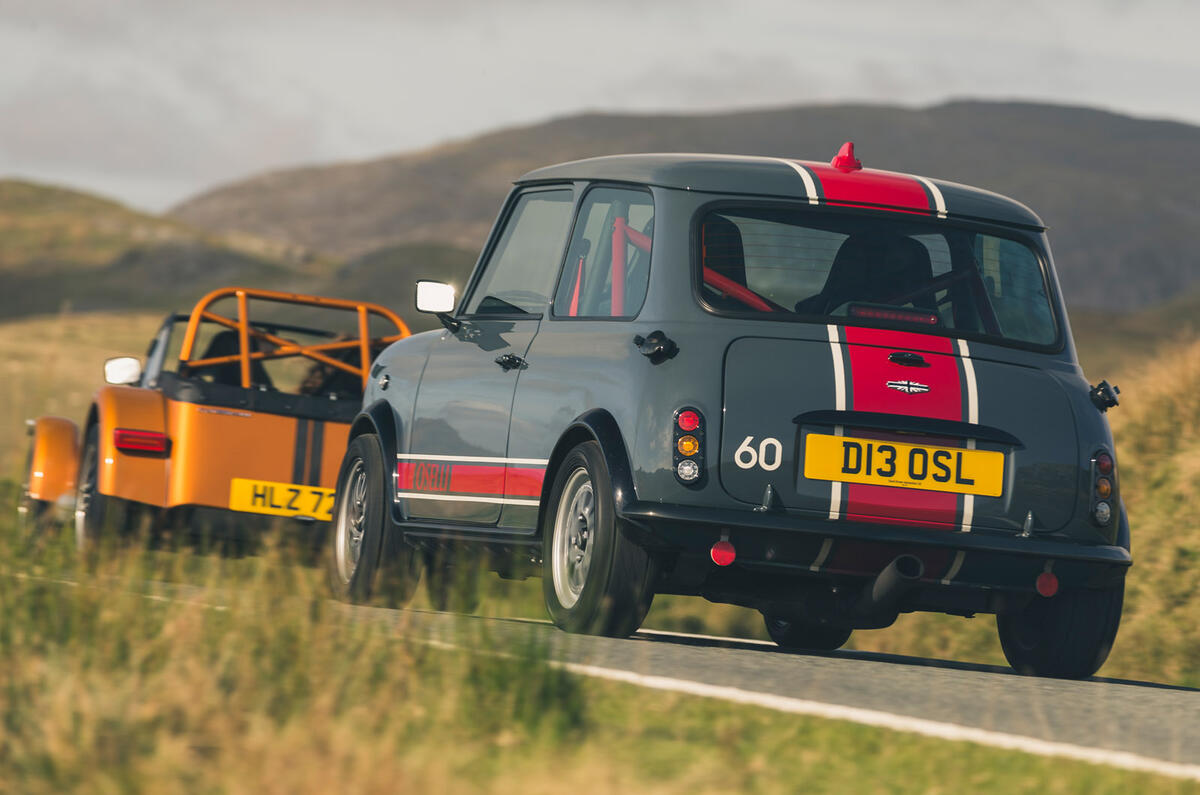
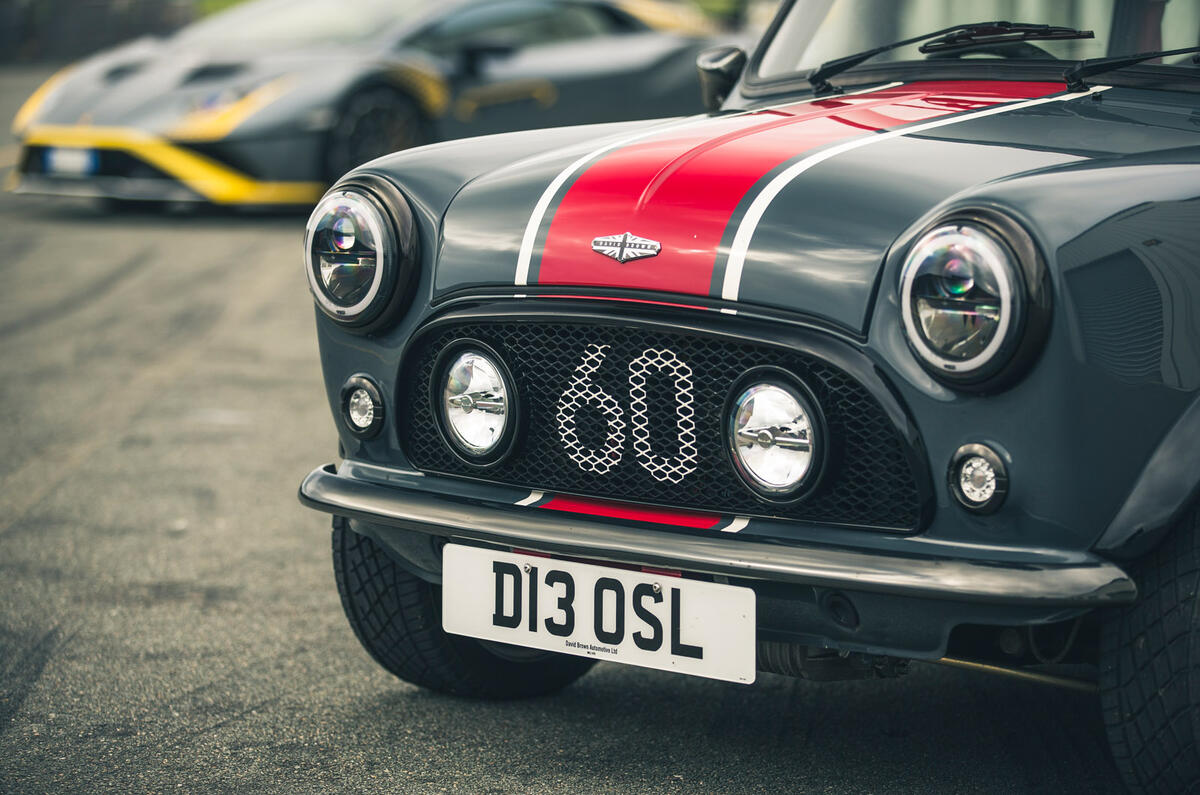


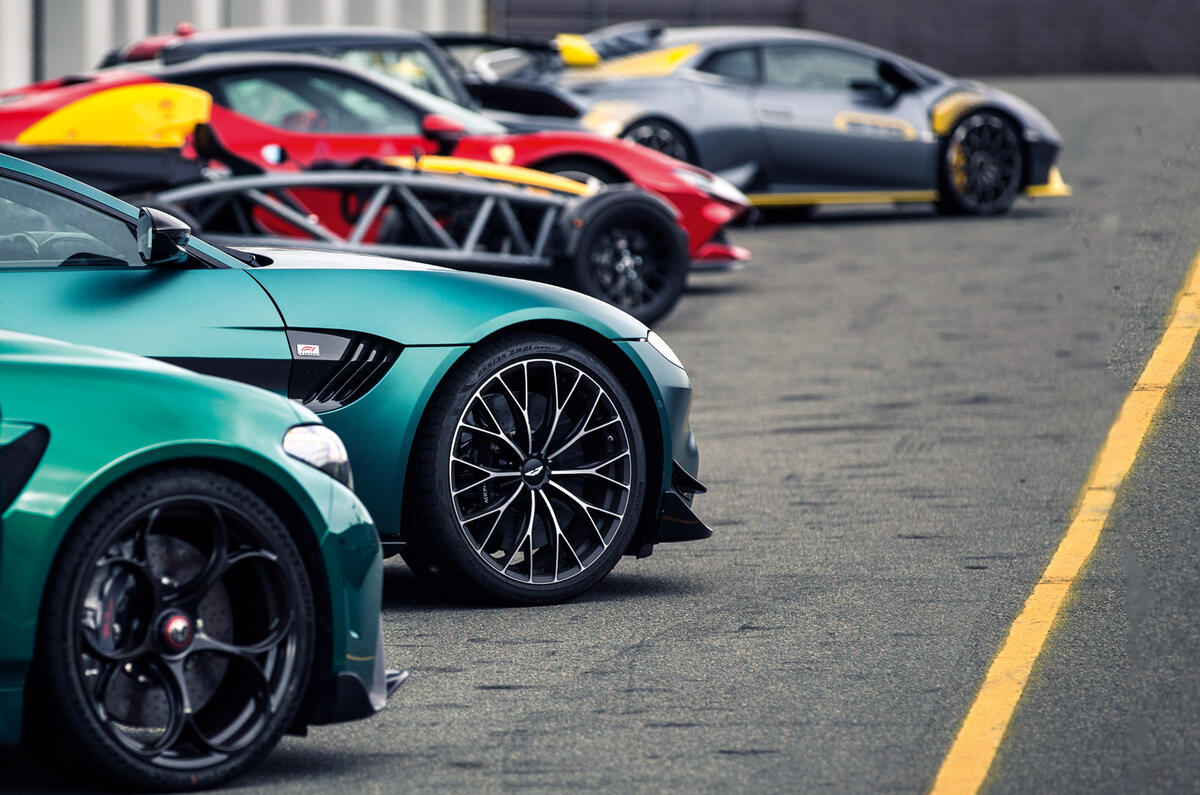

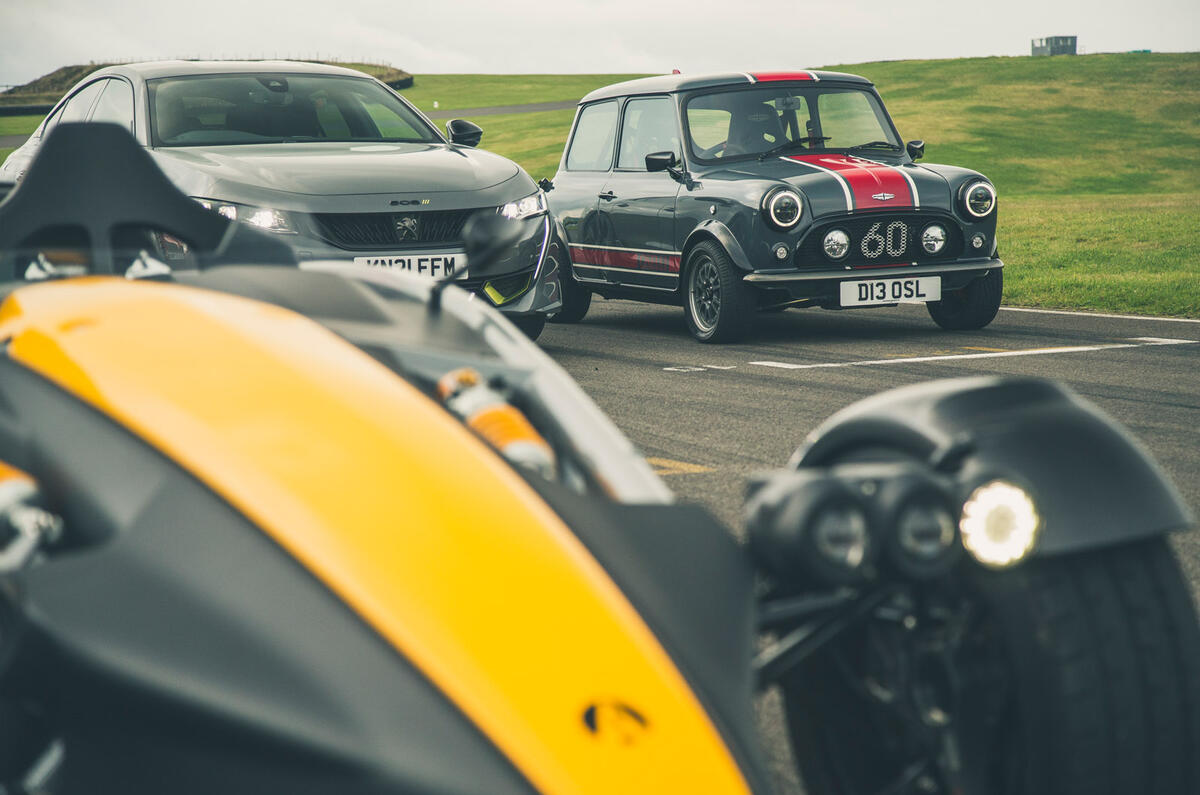
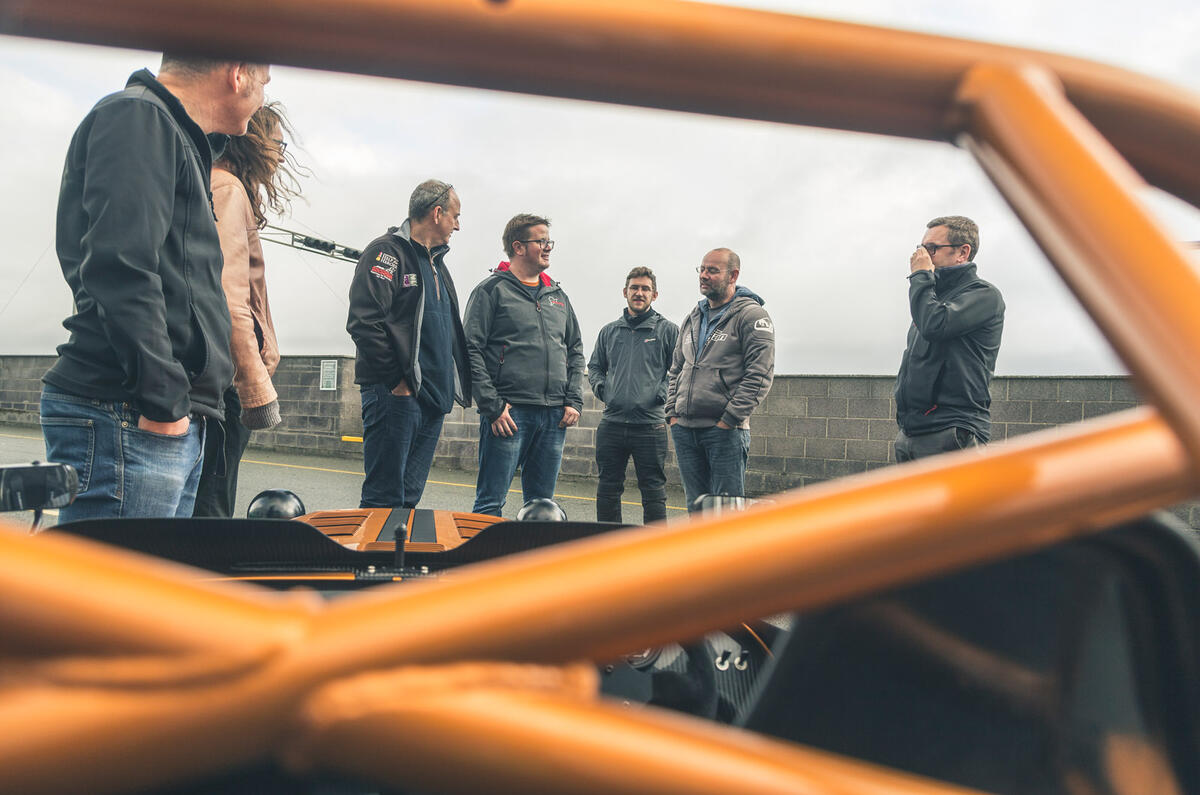
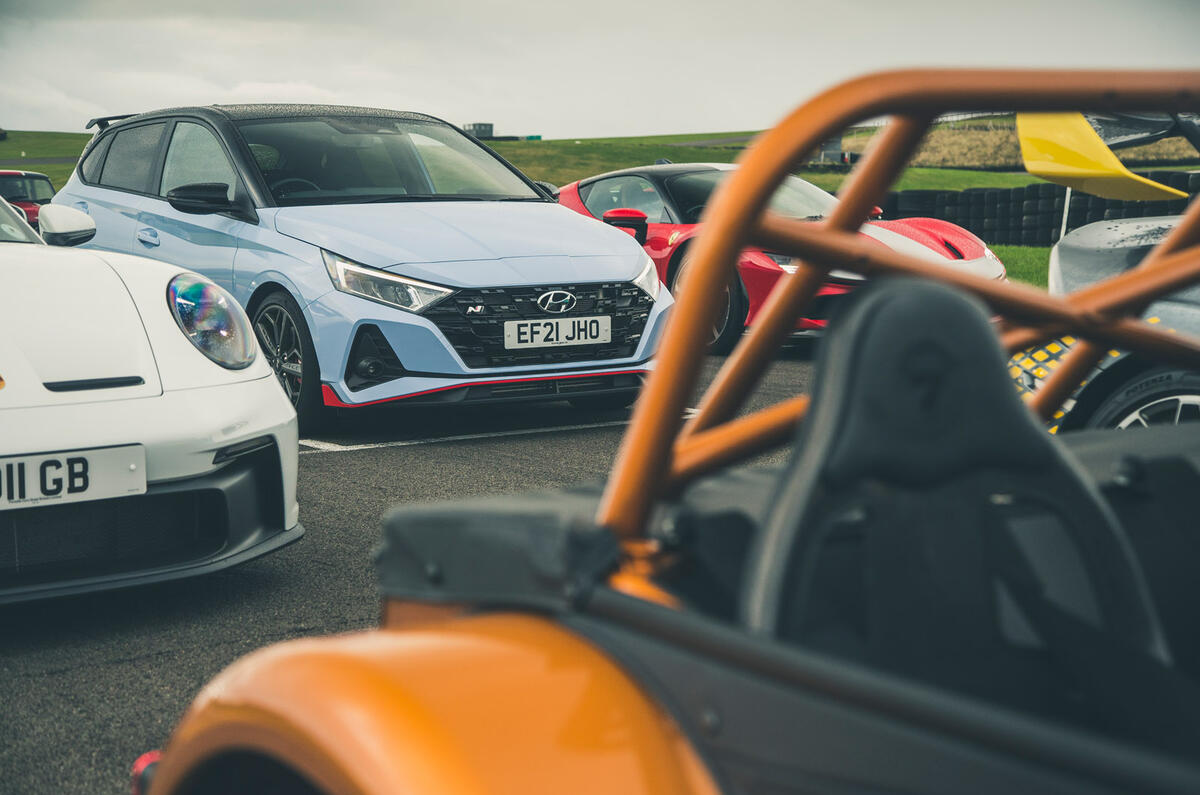
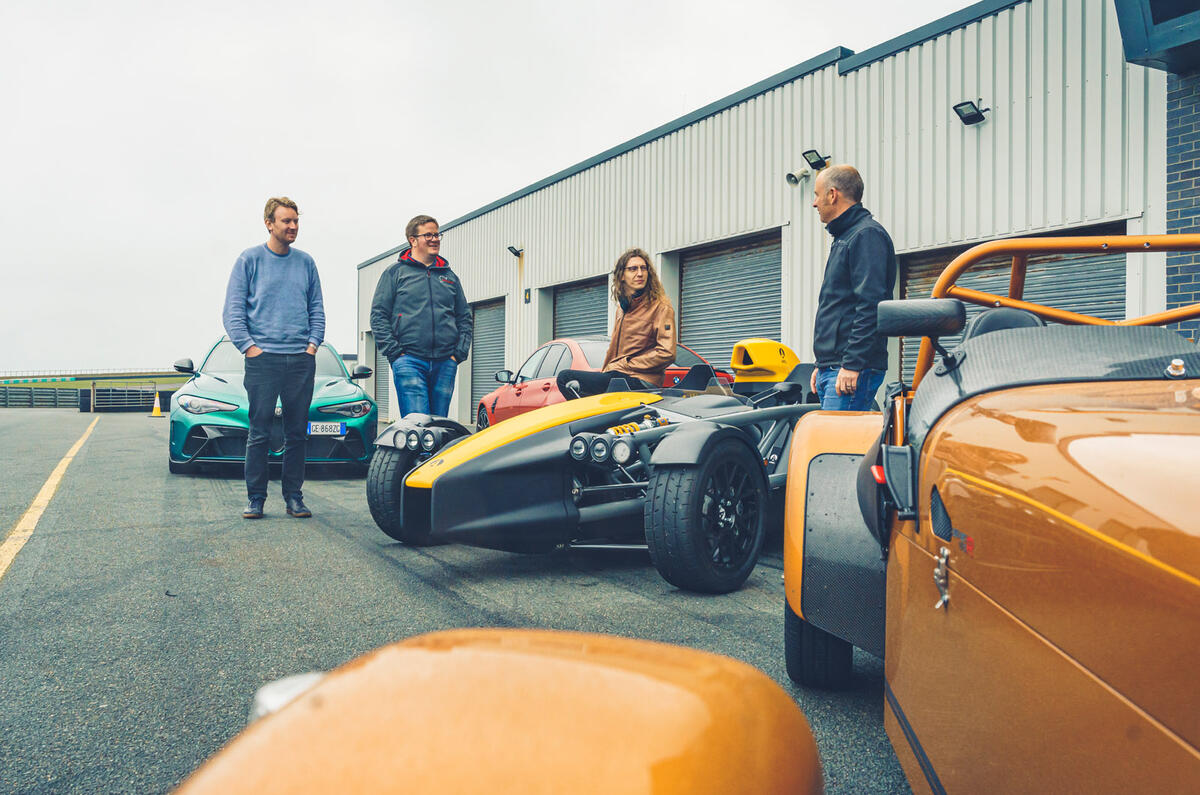
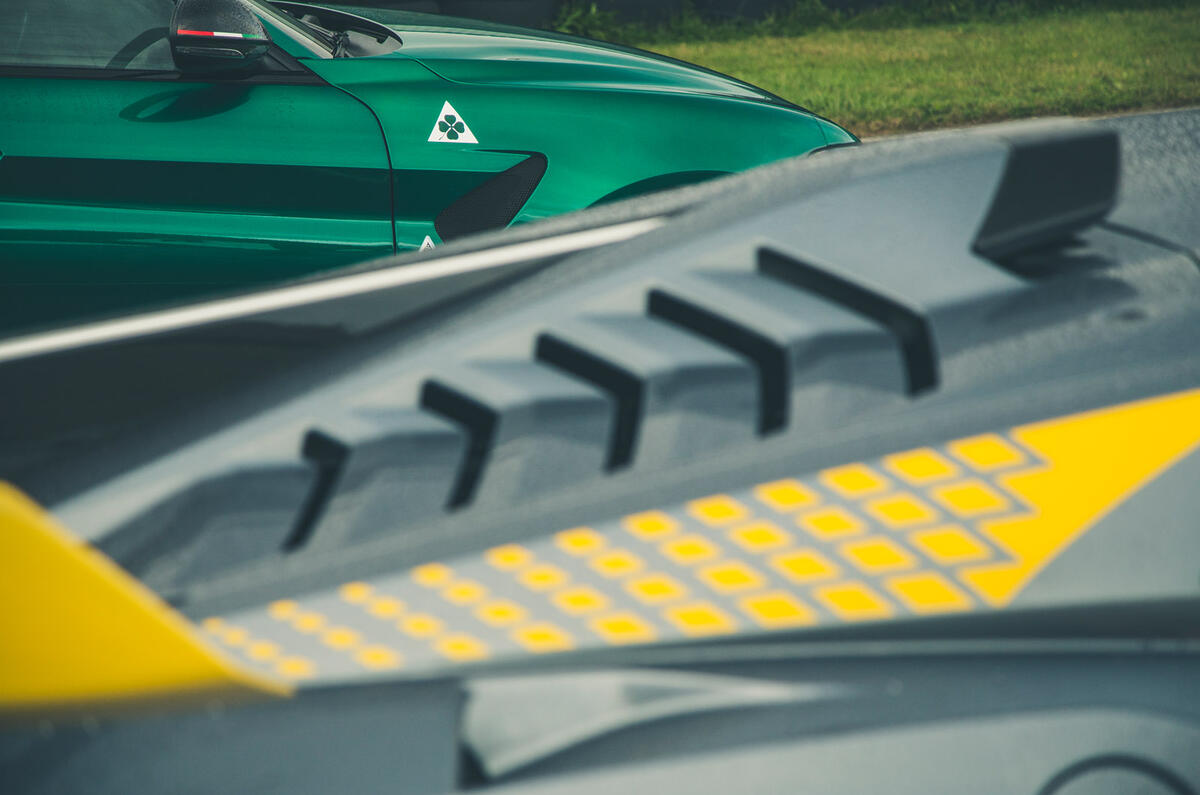
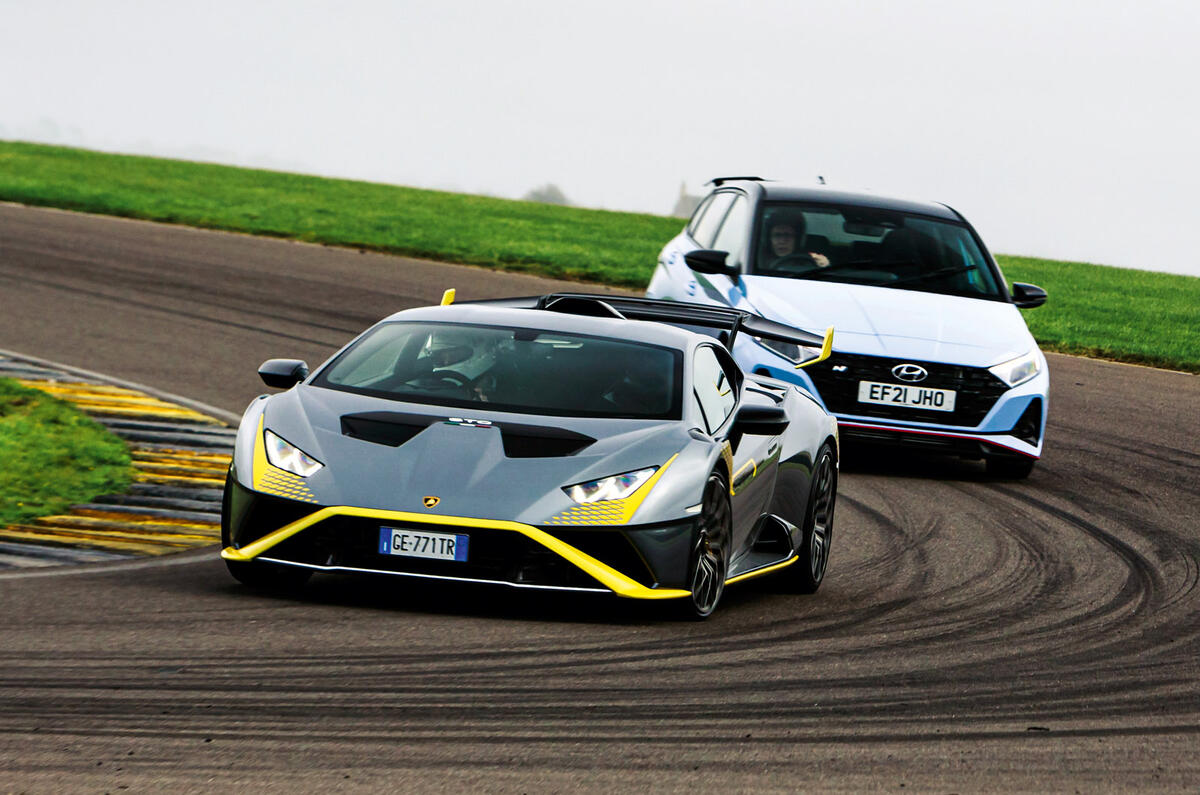
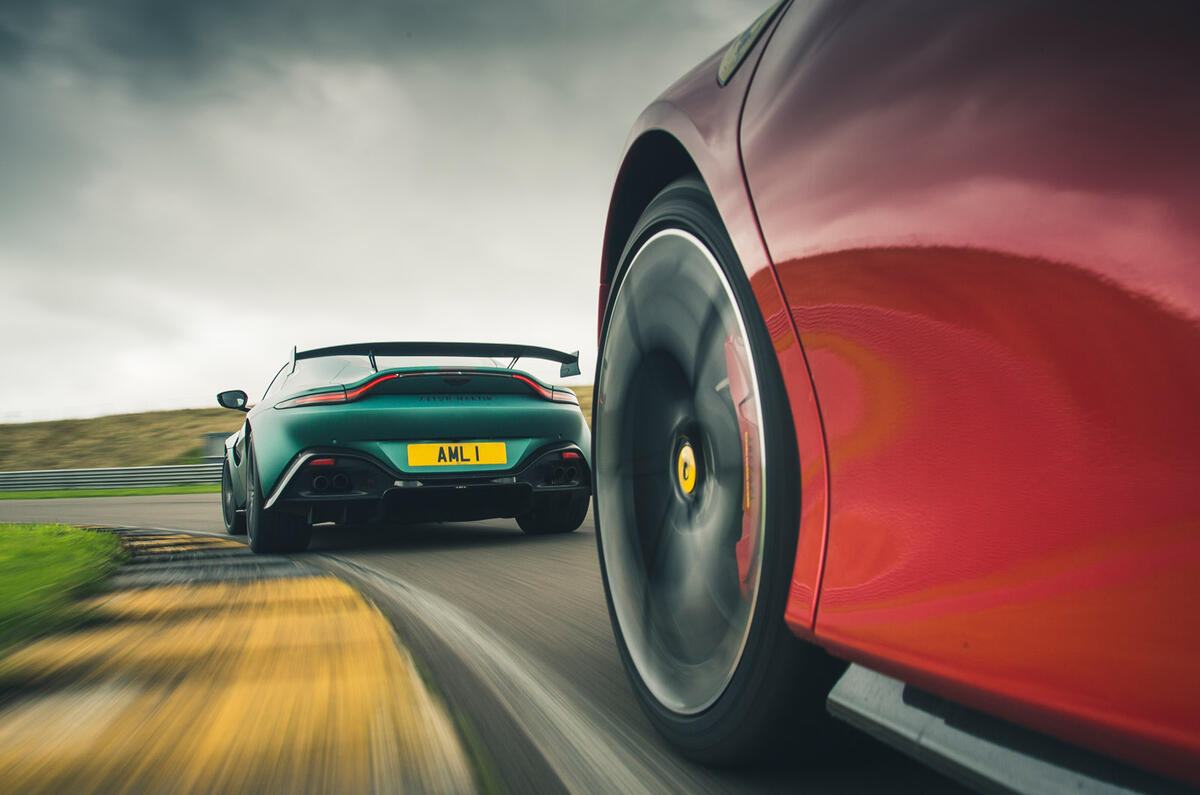
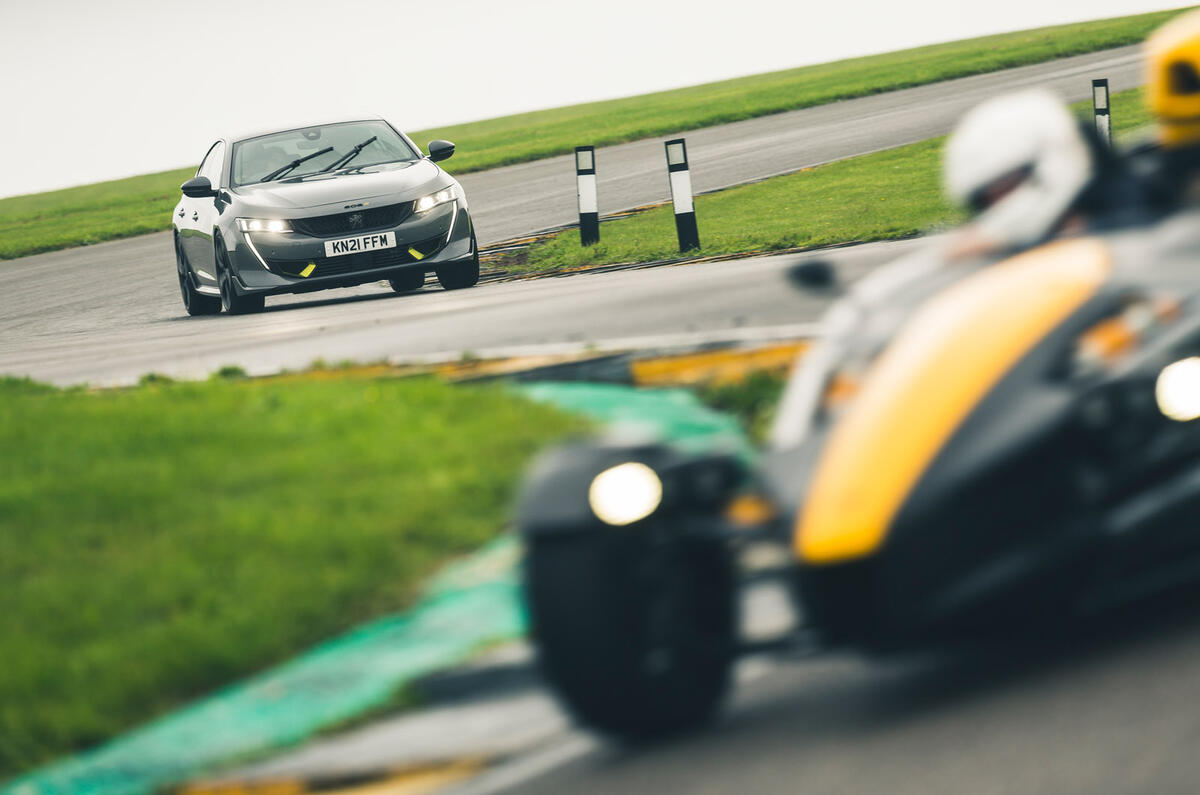
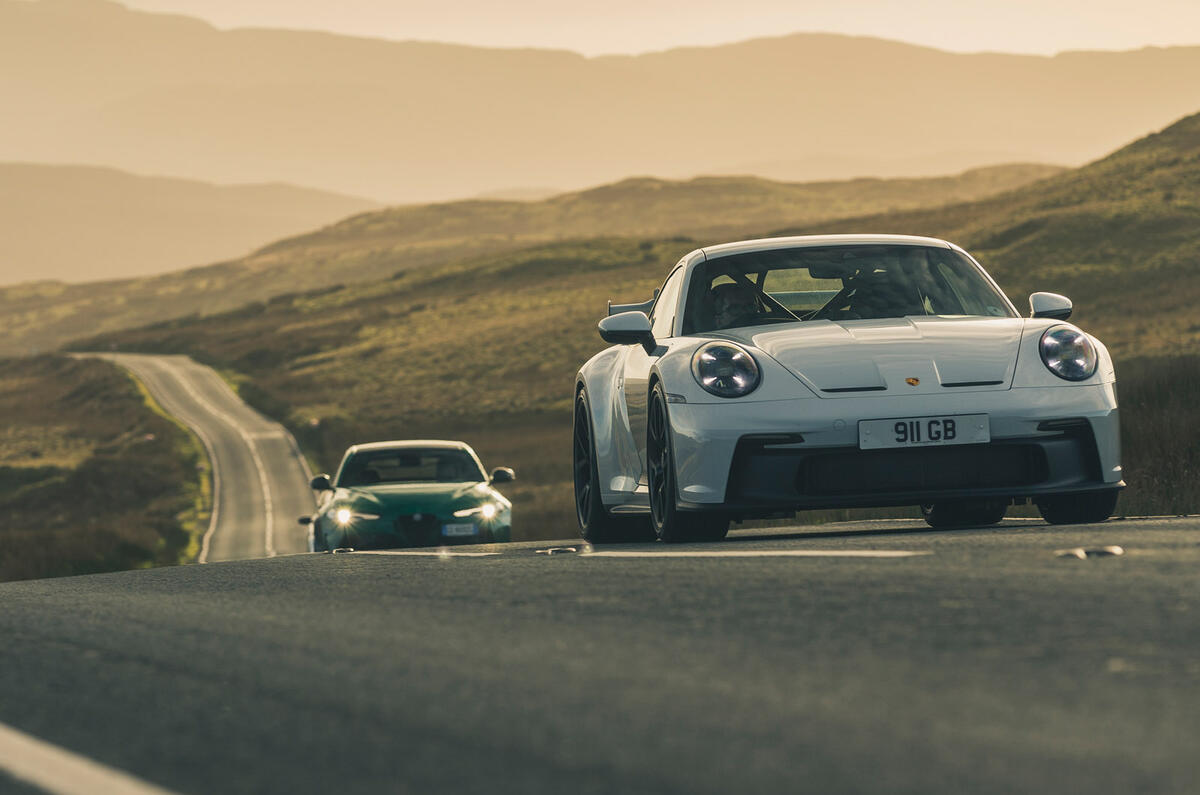
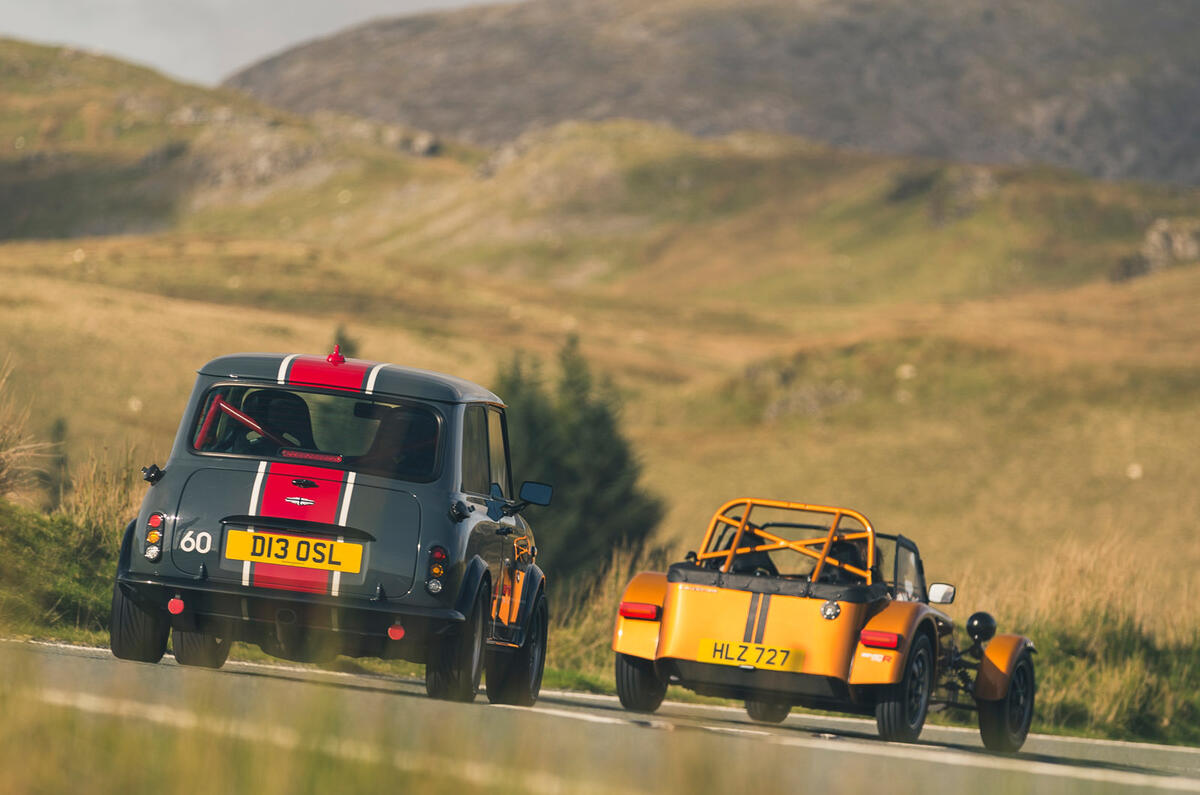


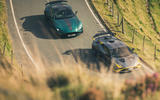





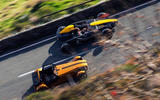

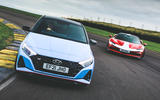
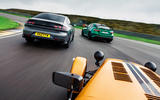


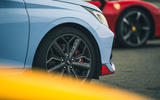
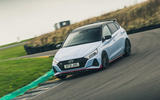
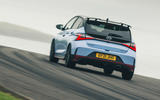

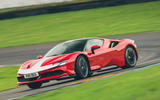
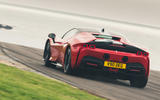
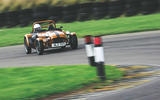

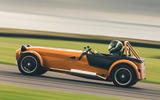


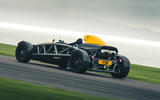
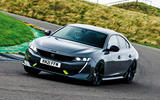



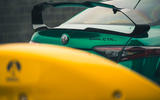
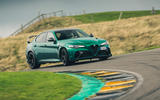
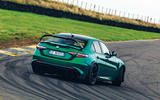




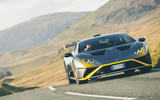
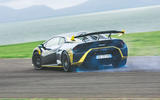

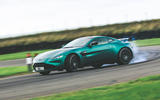

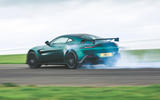



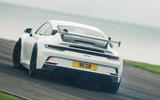

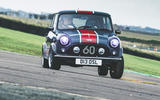
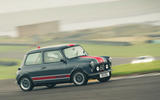










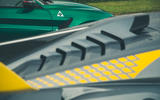
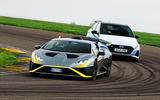










Join the debate
Add your comment
To be honest, I'd have liked a twenty minute Video than three separate articles of which, the third , told me the winner without having to trawl through the other two articles!